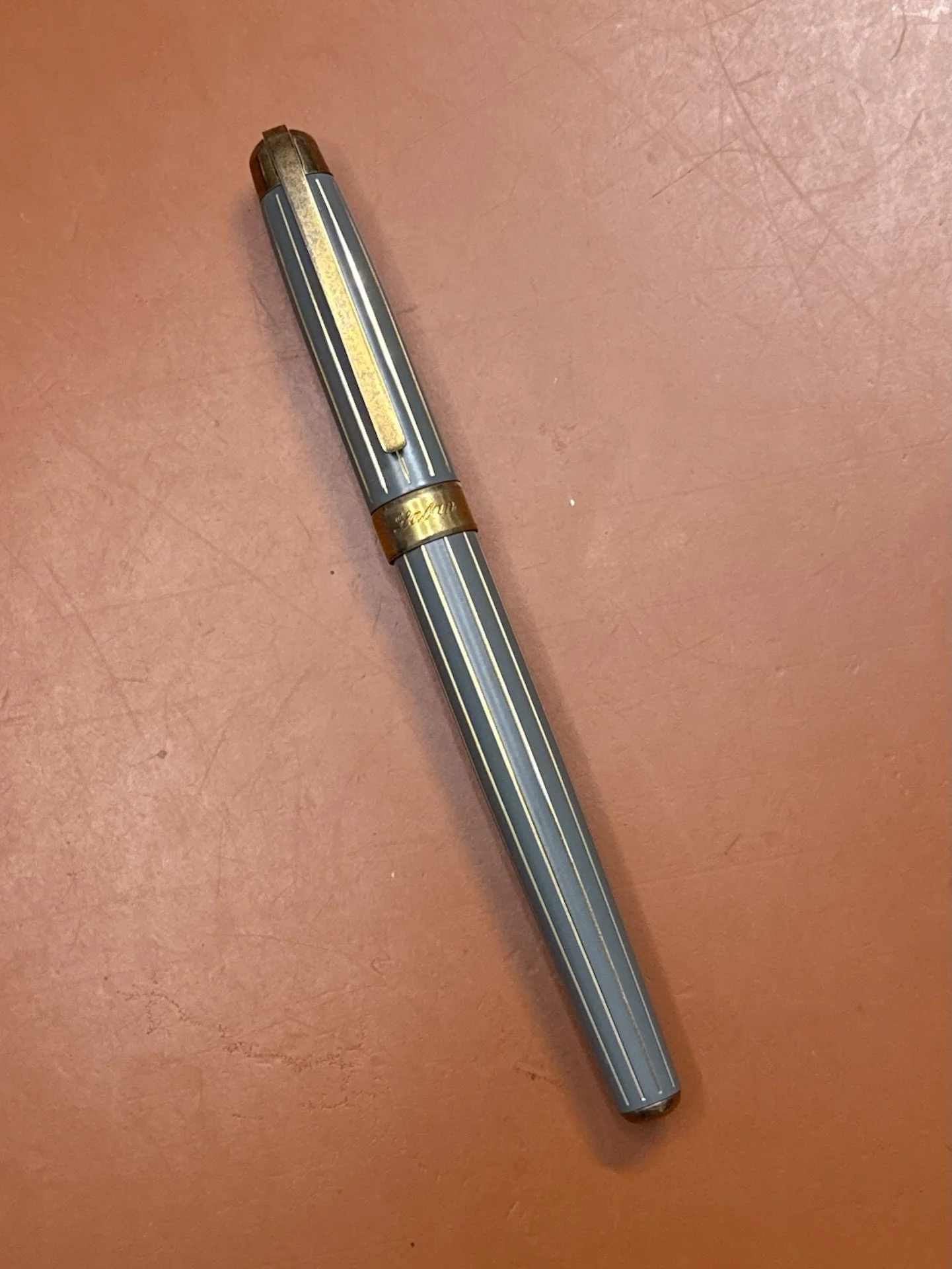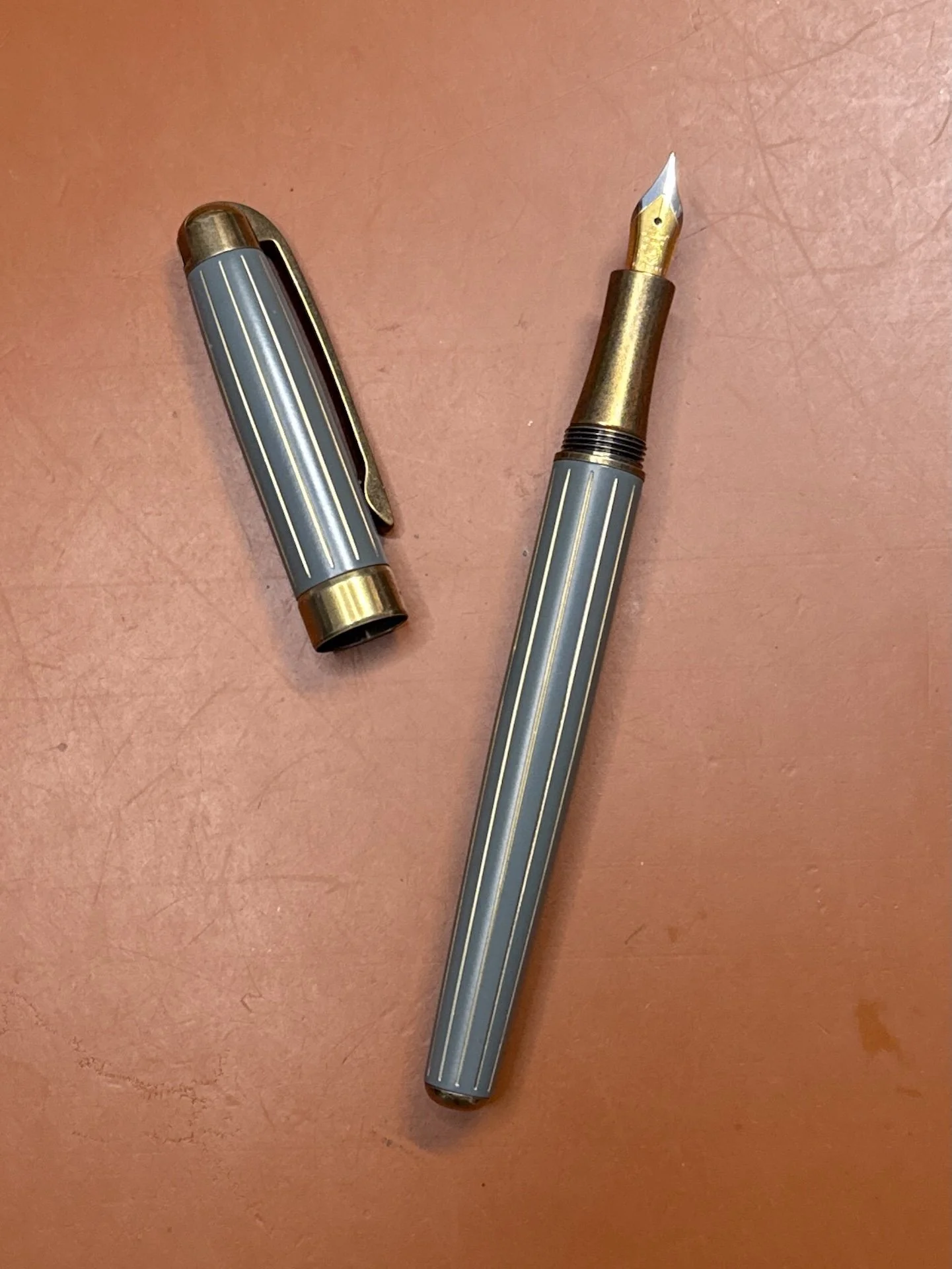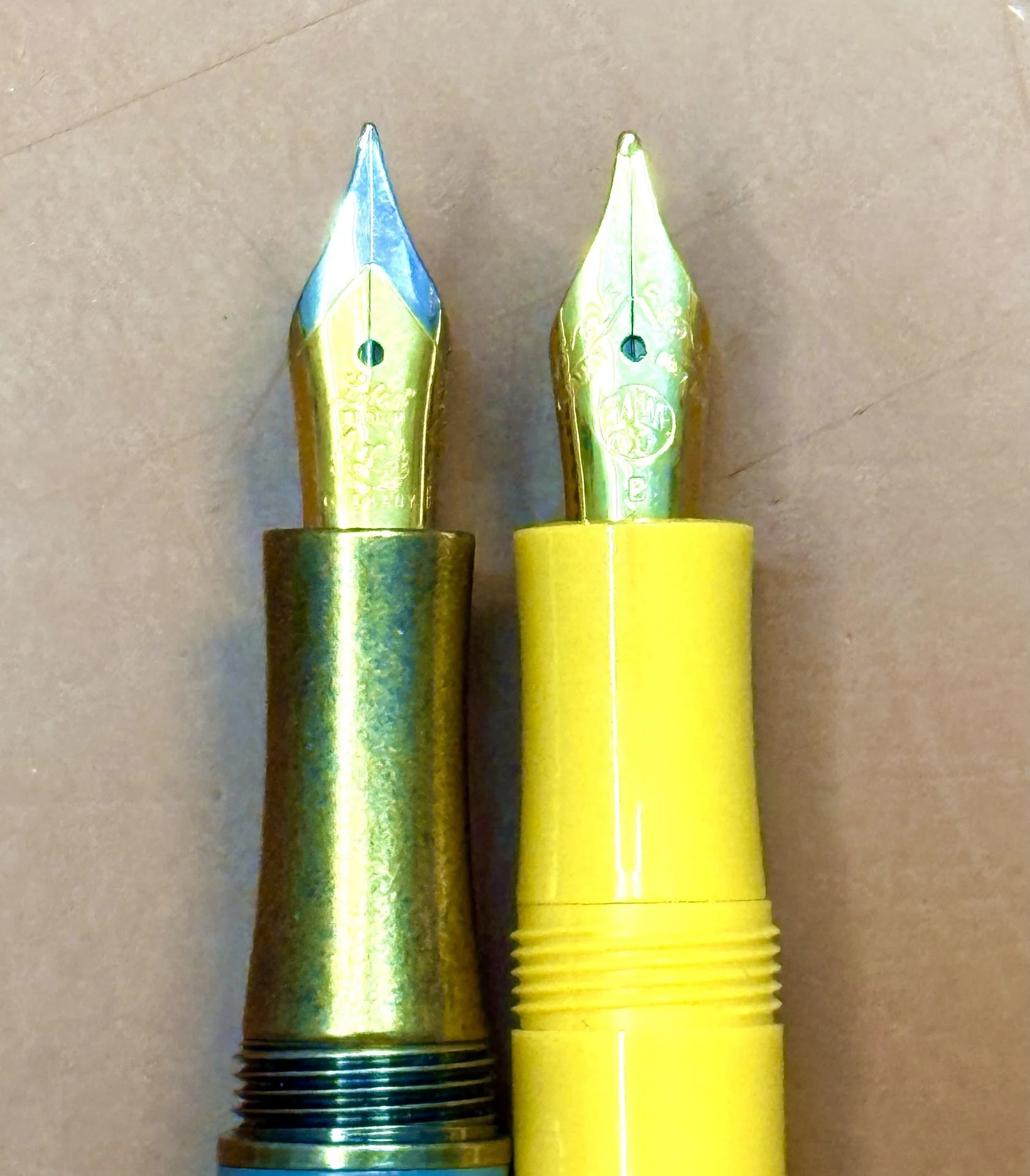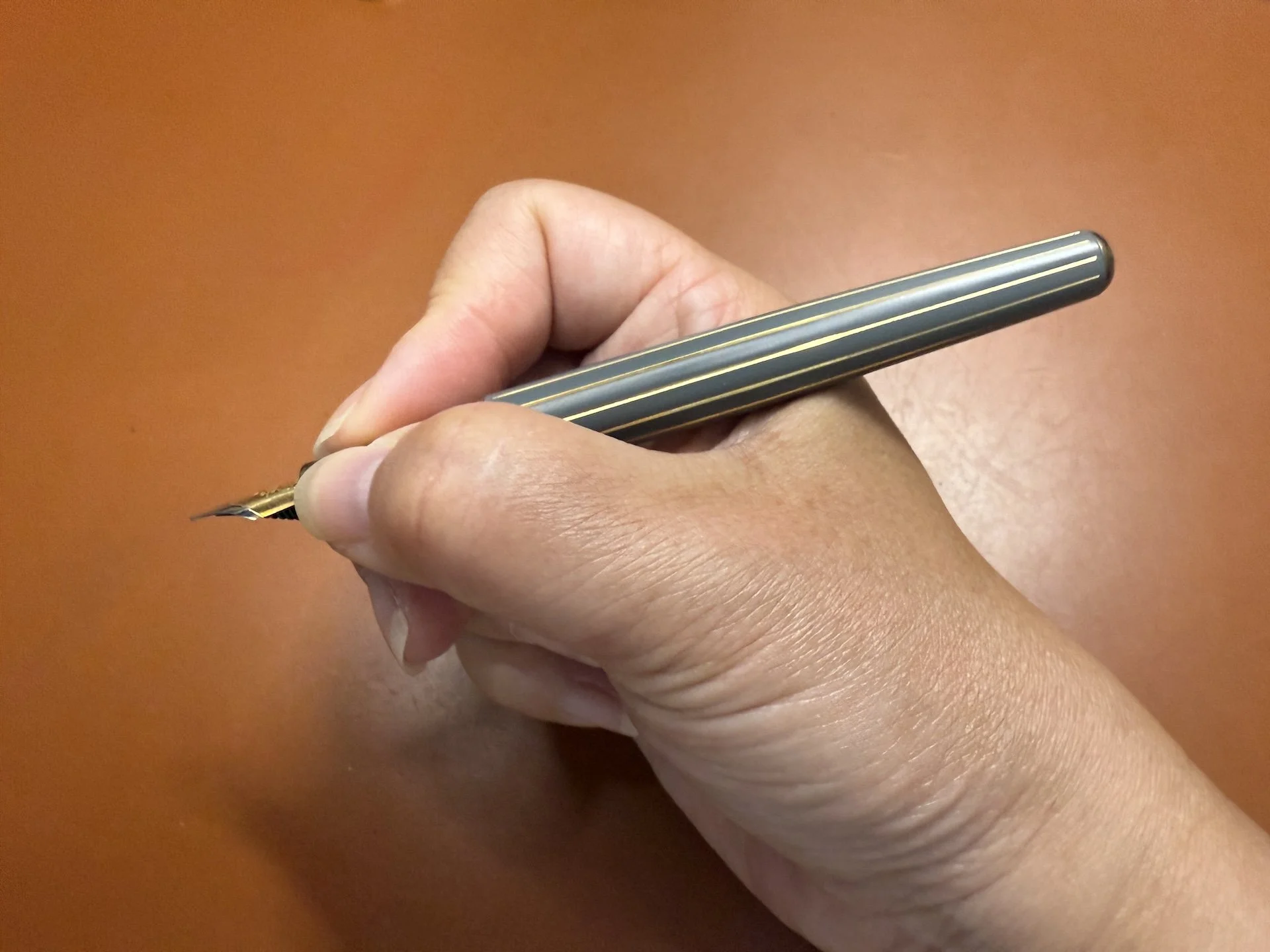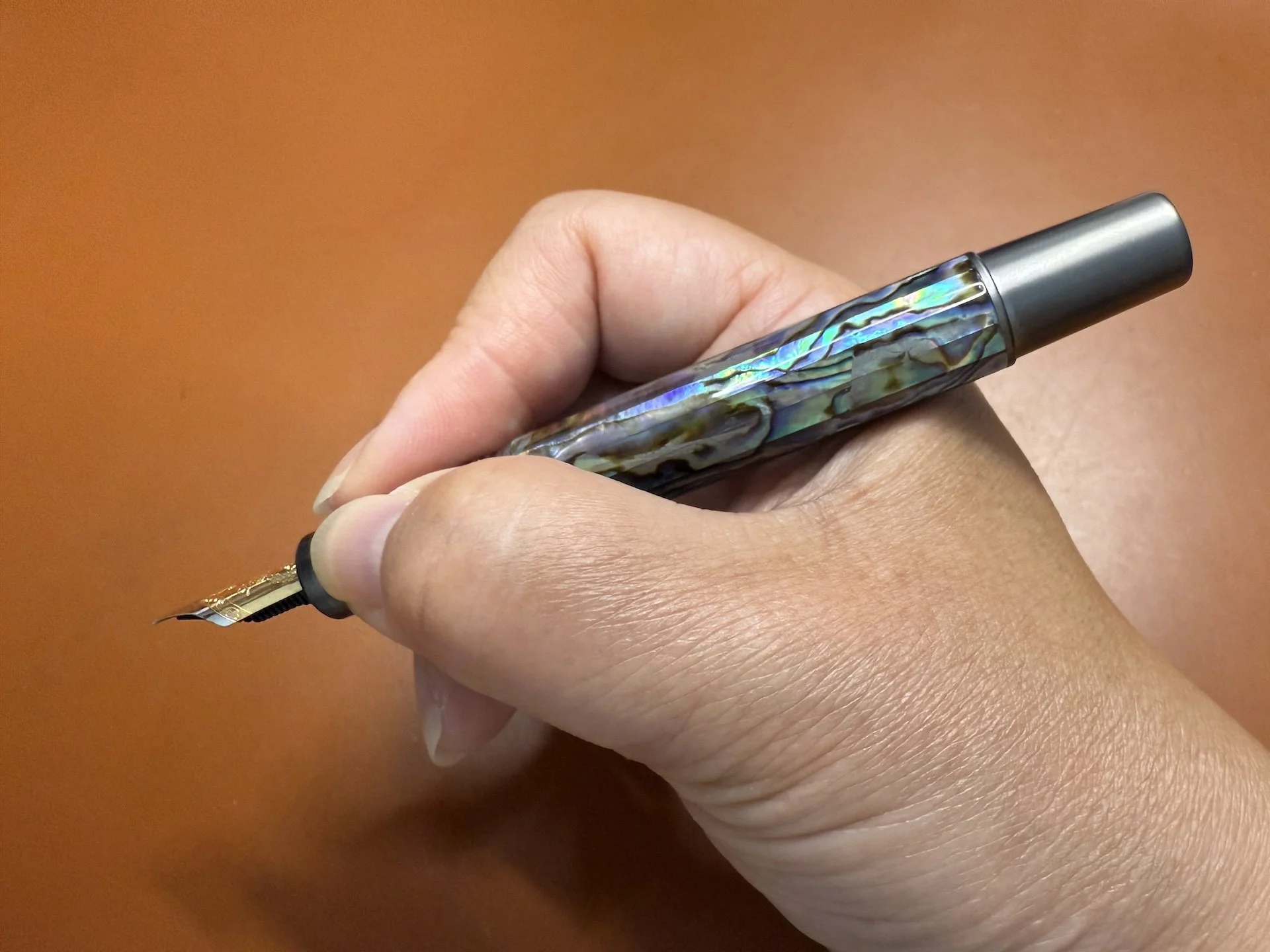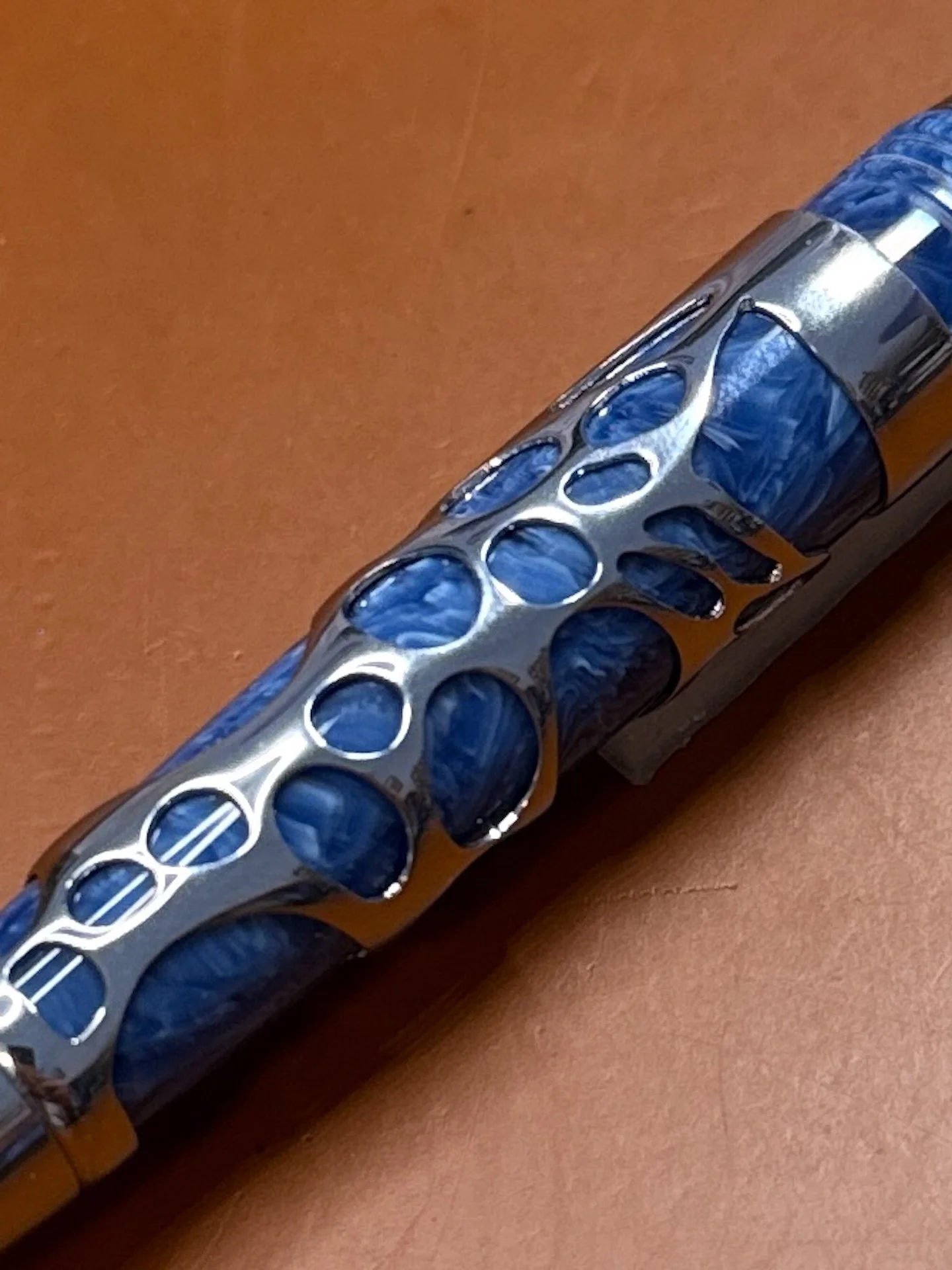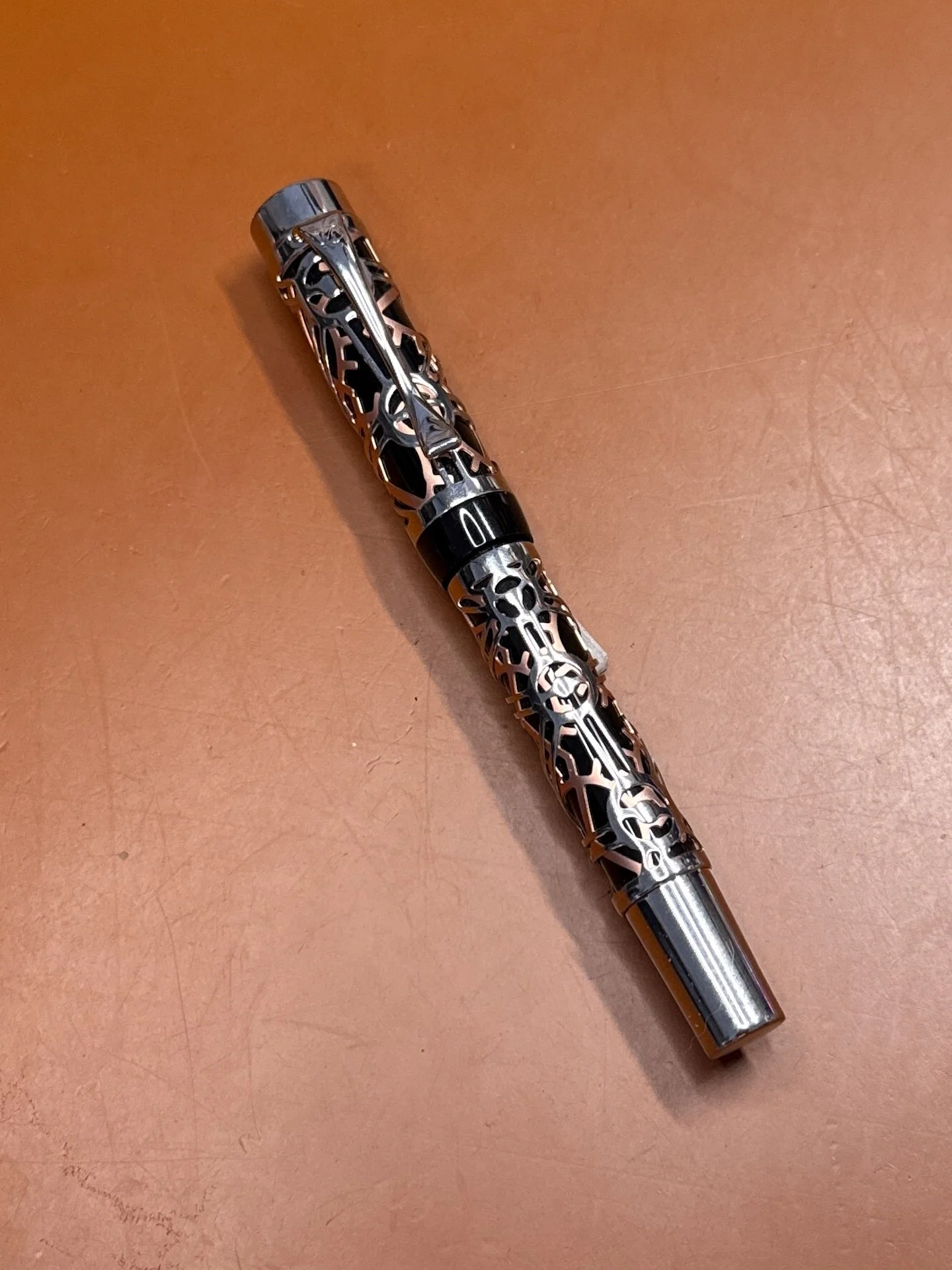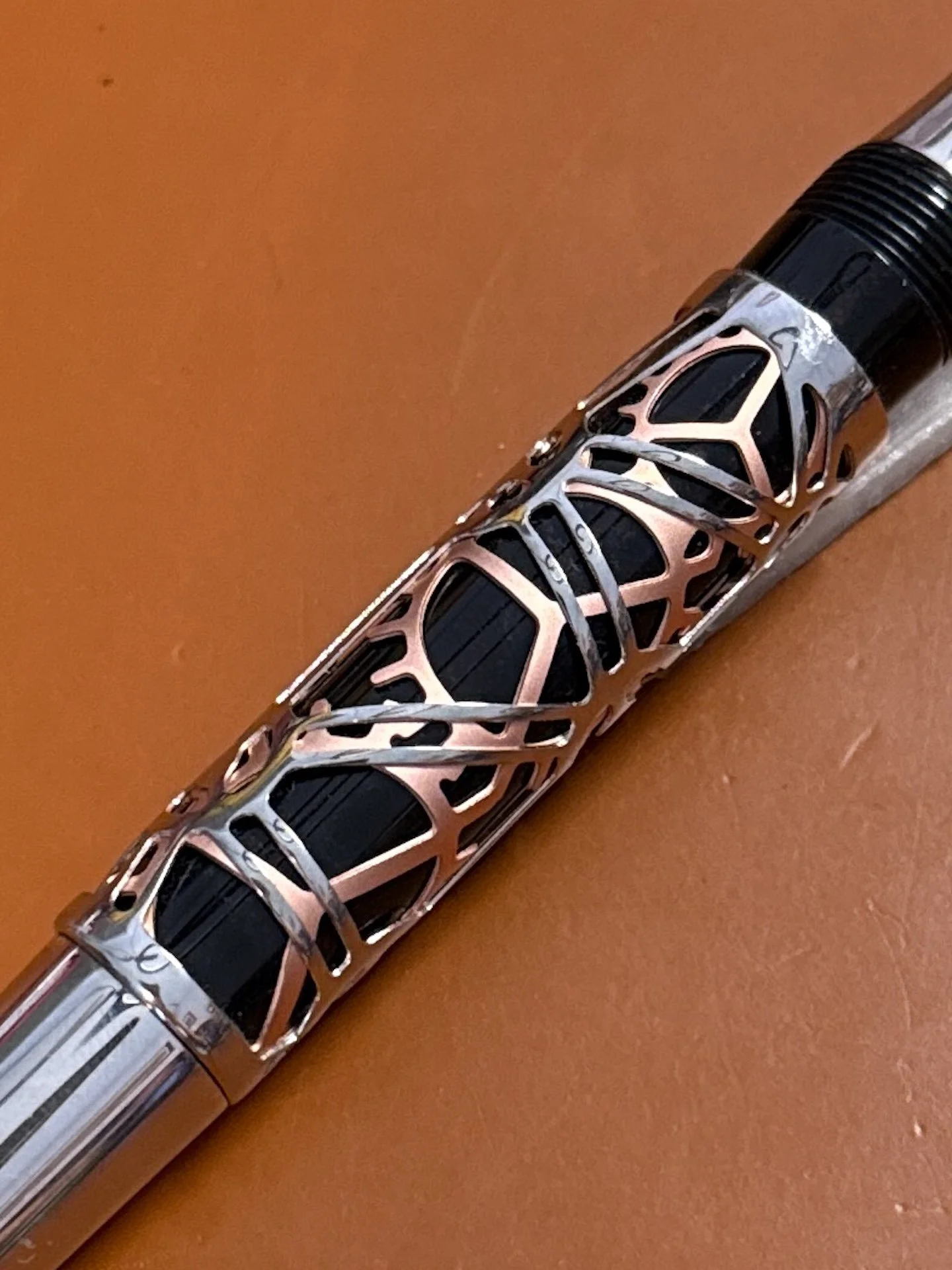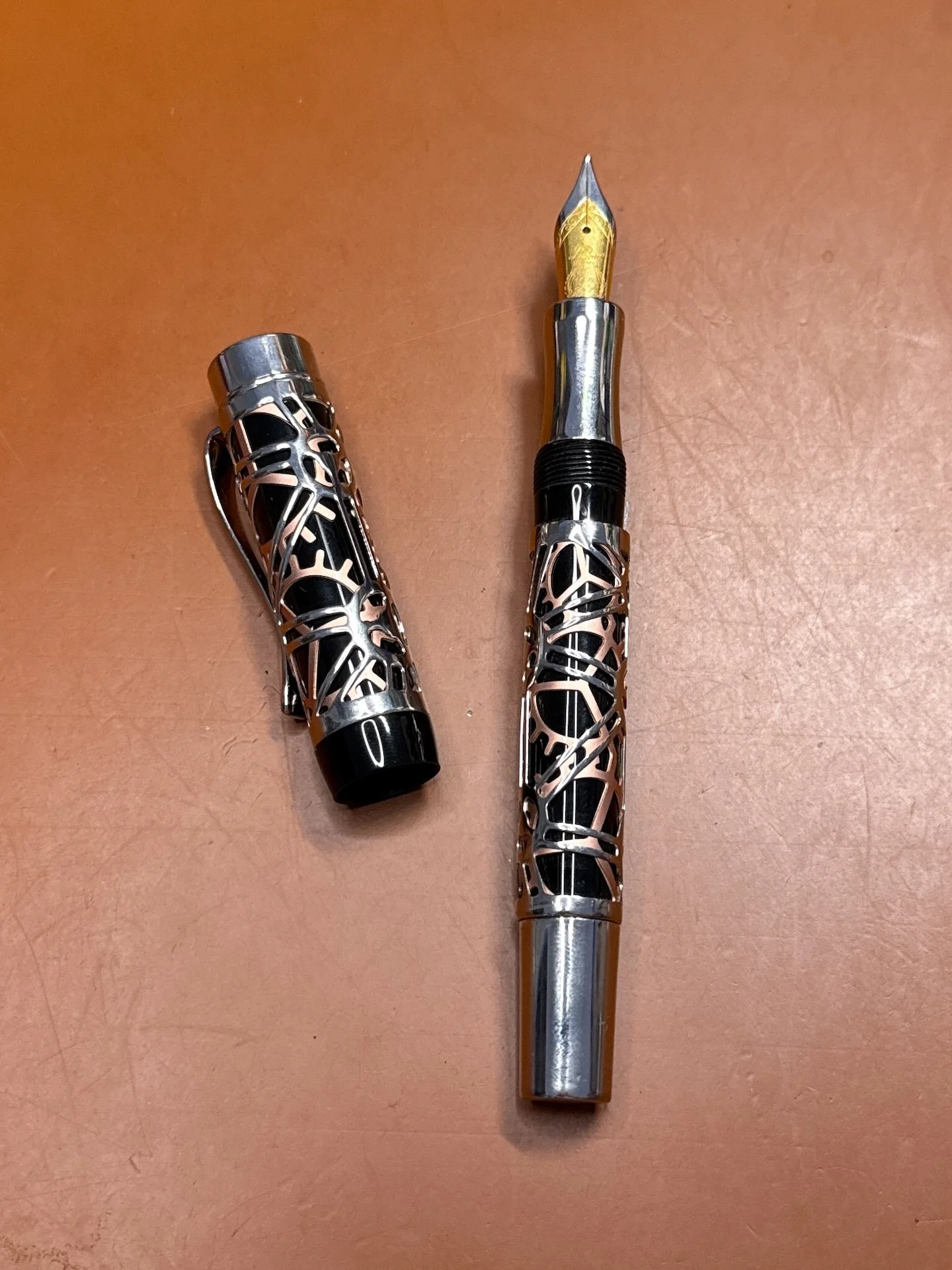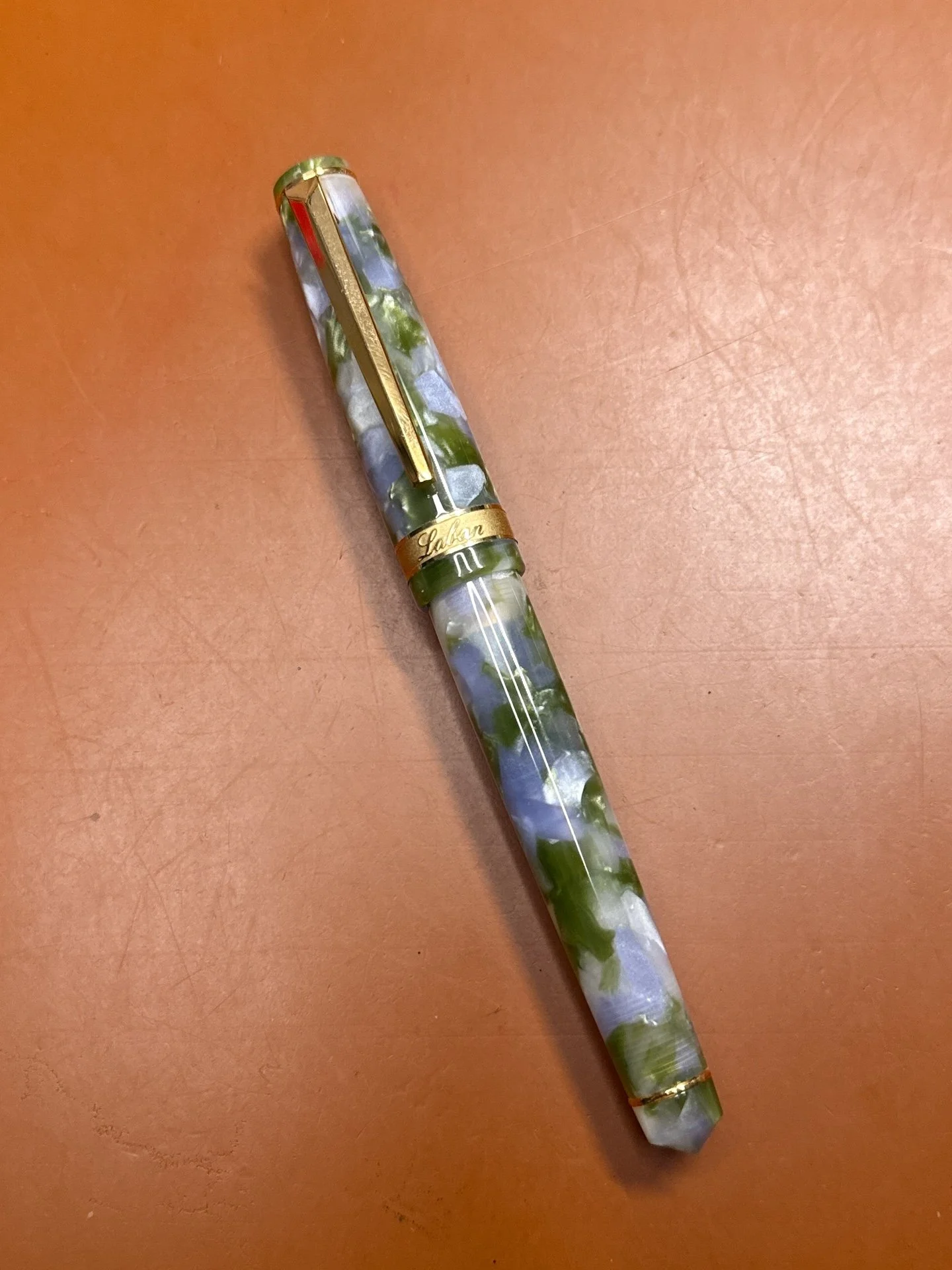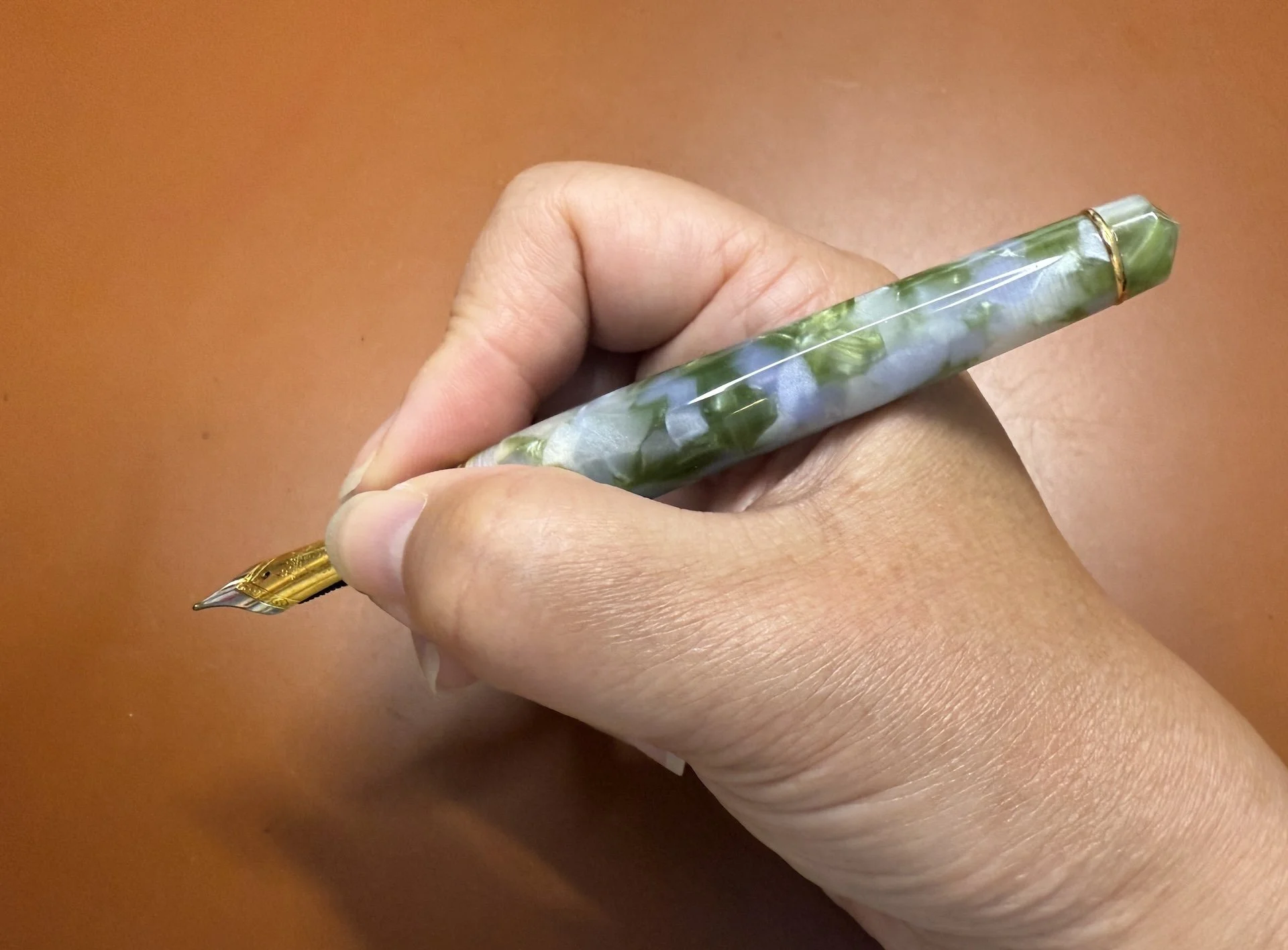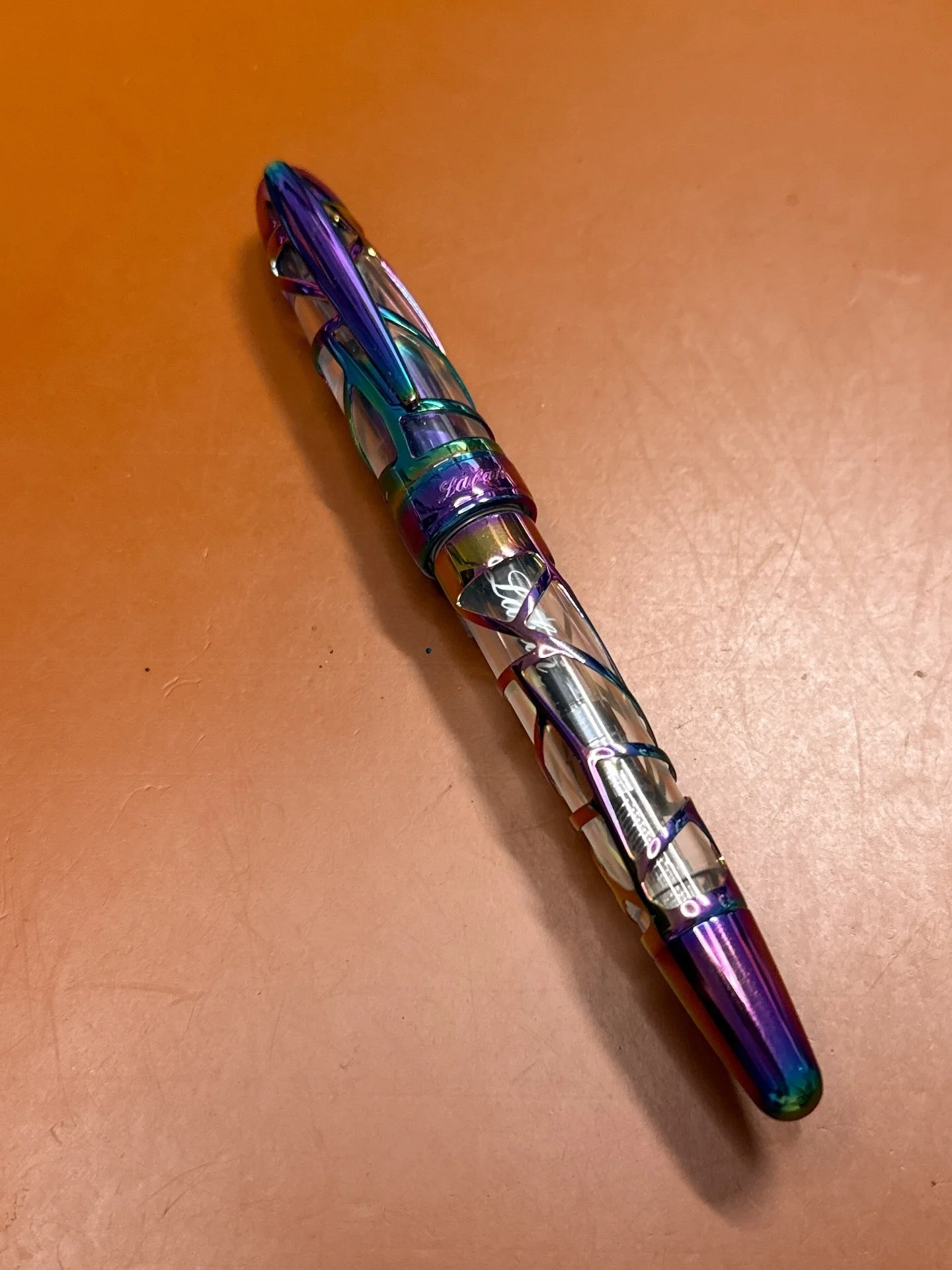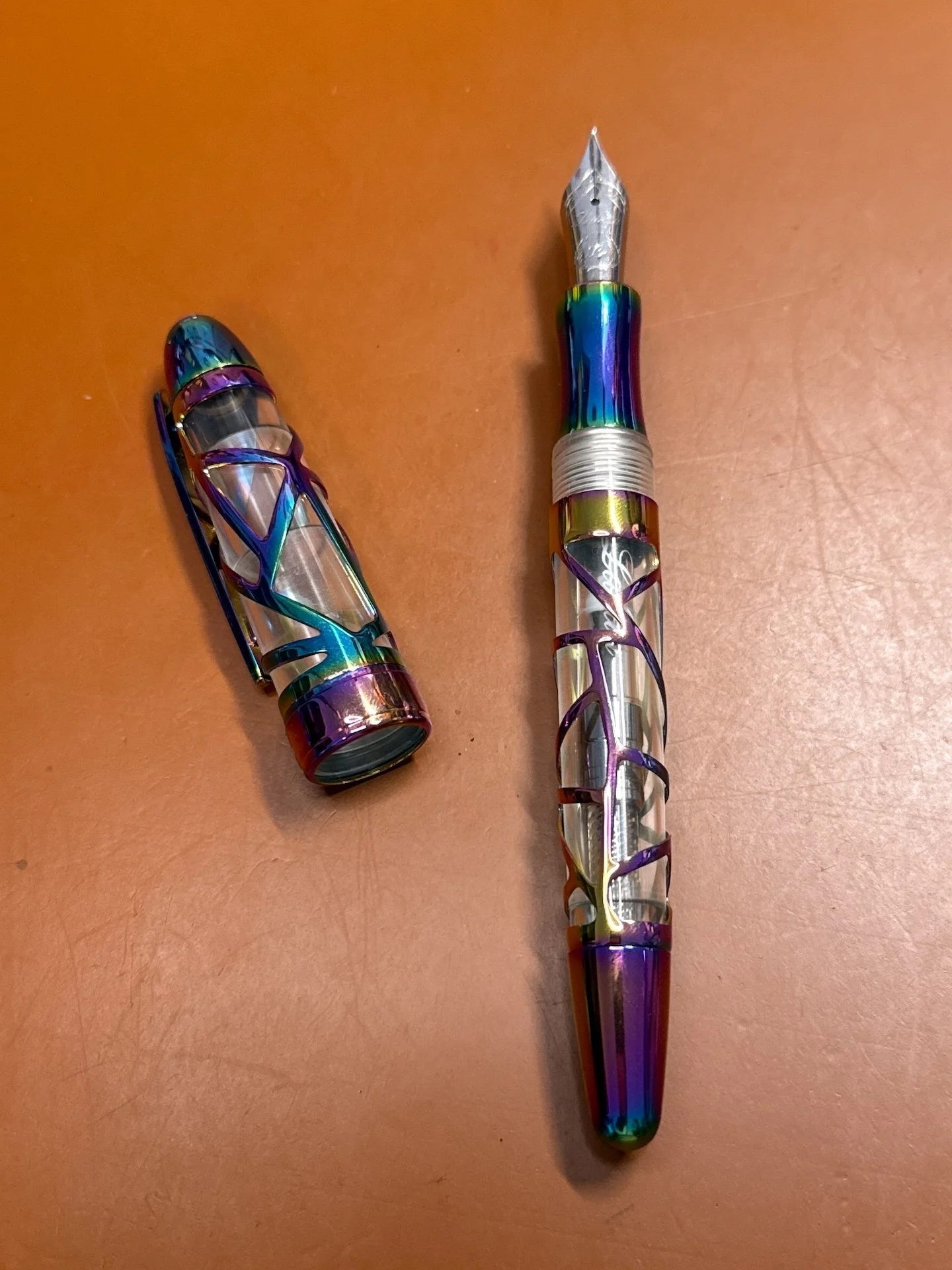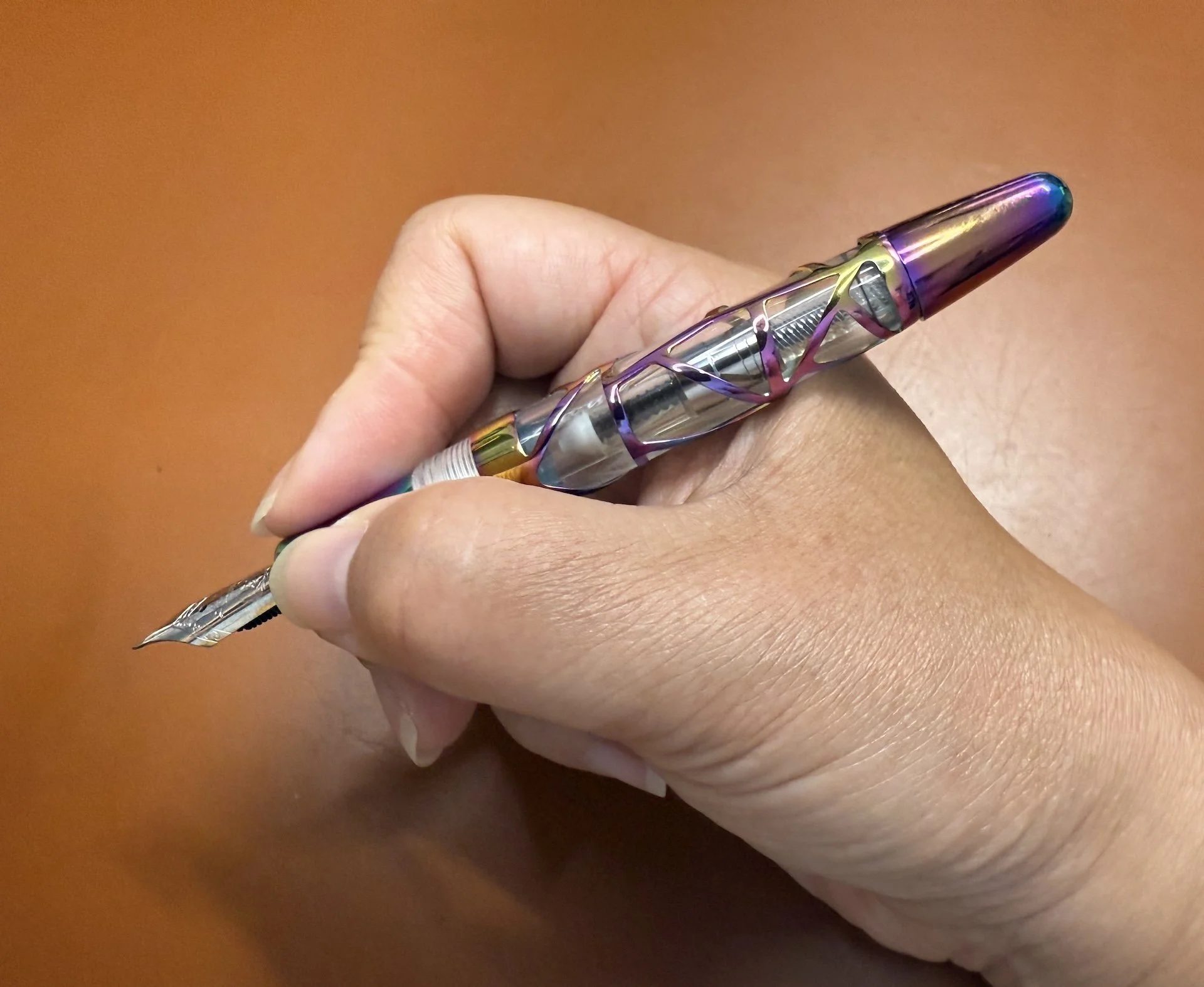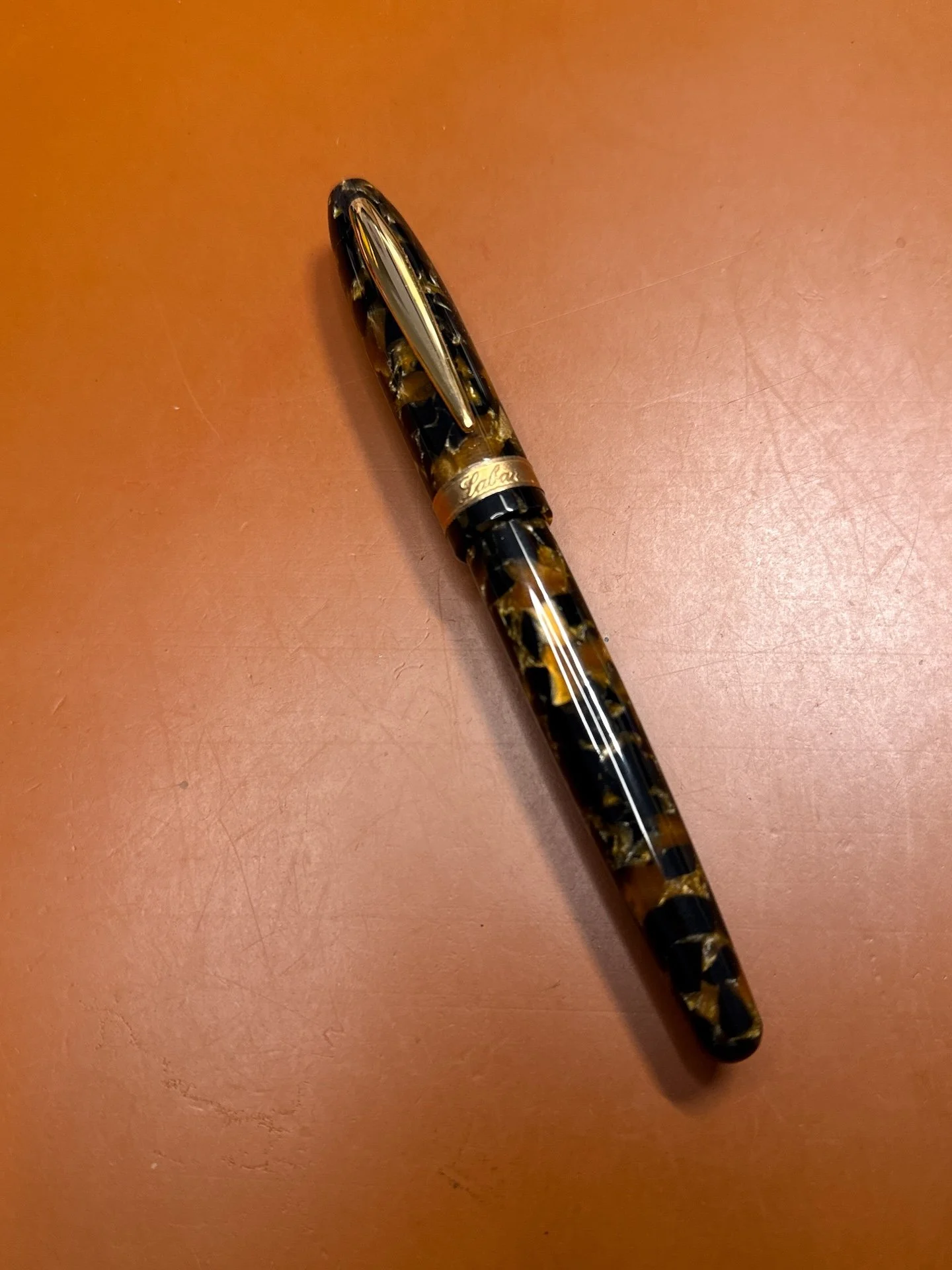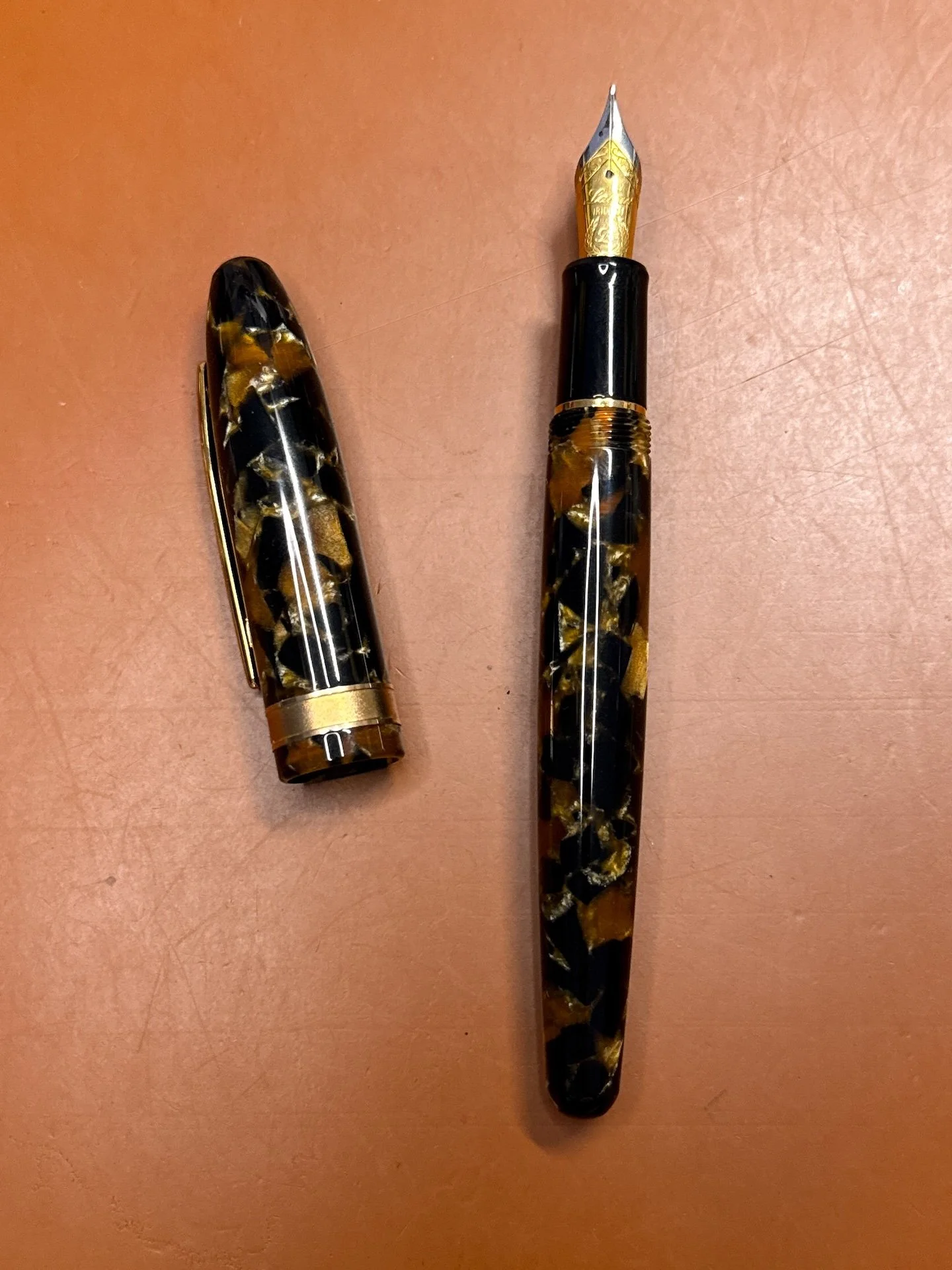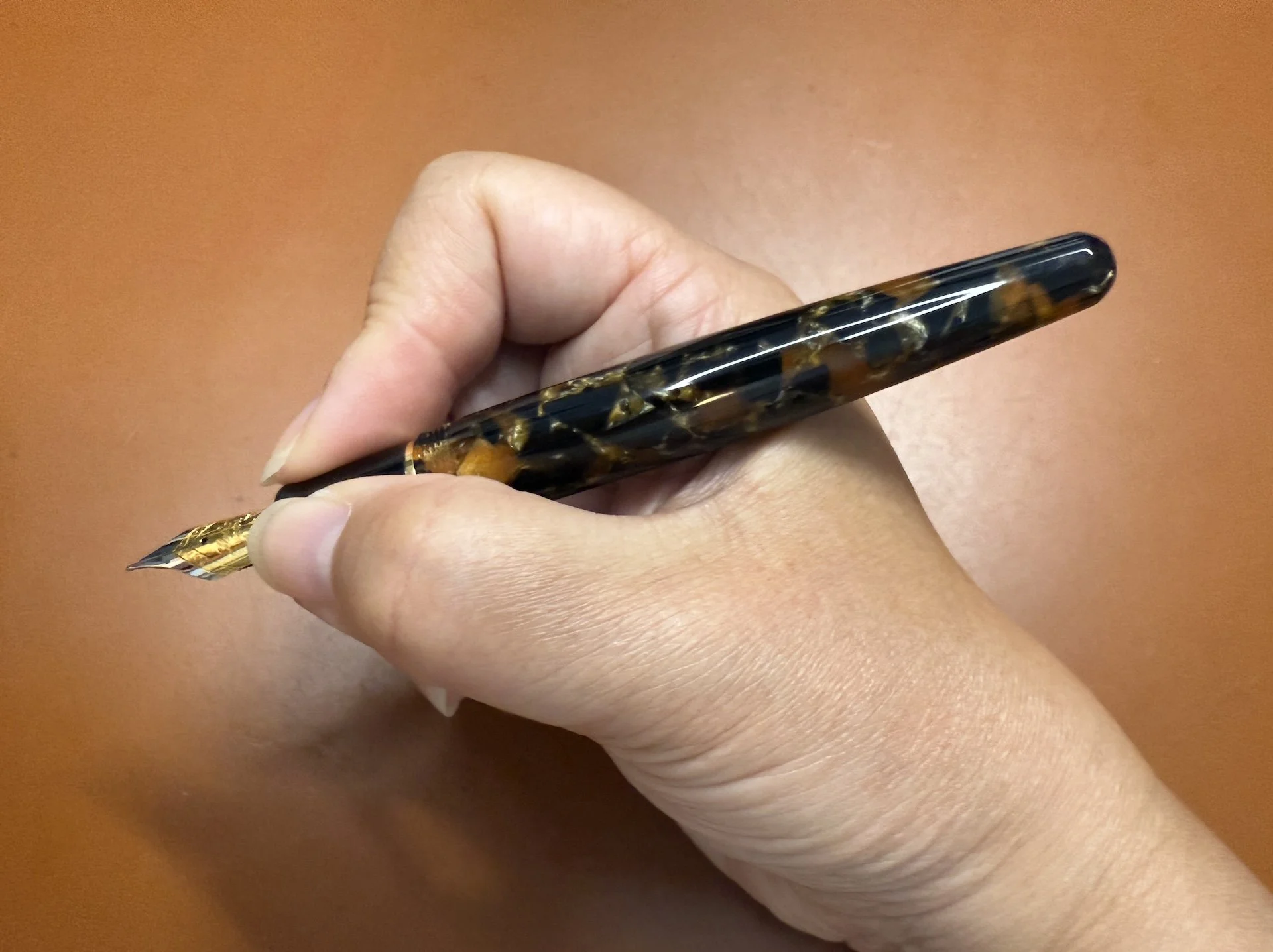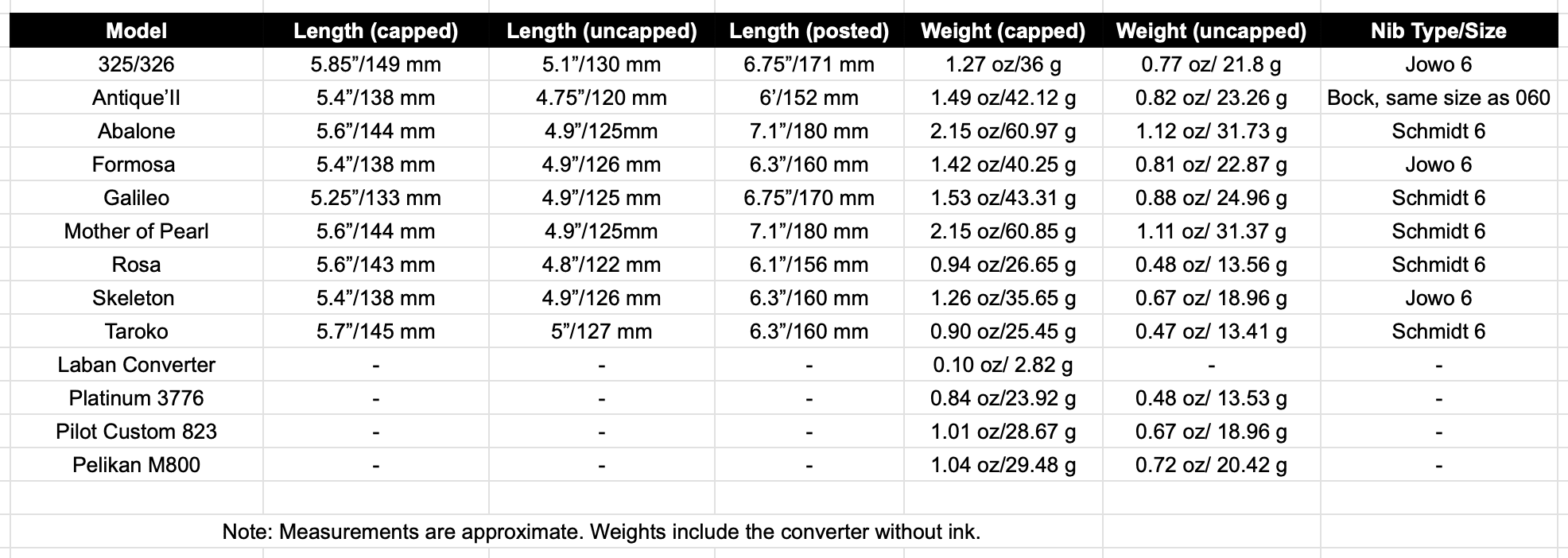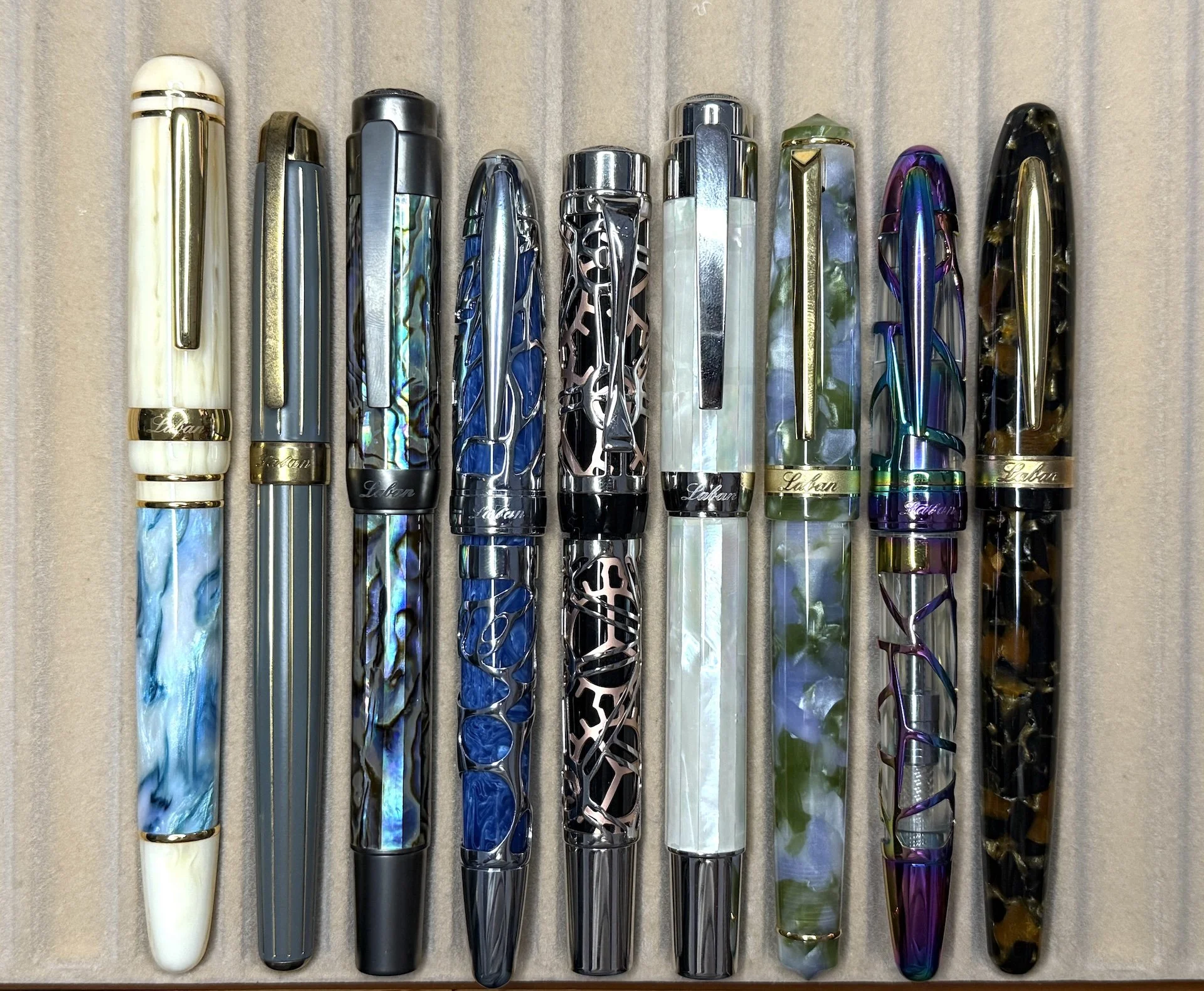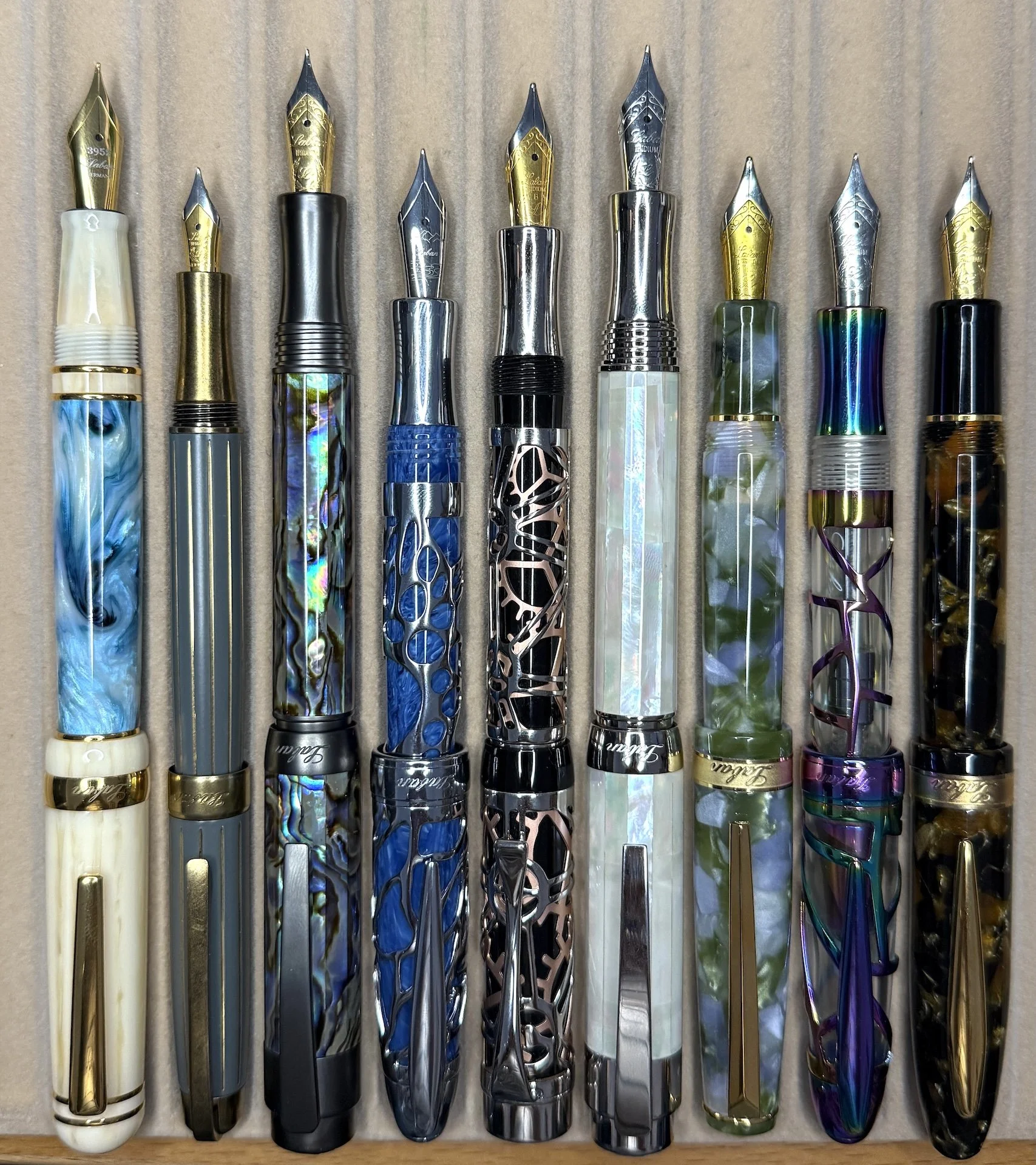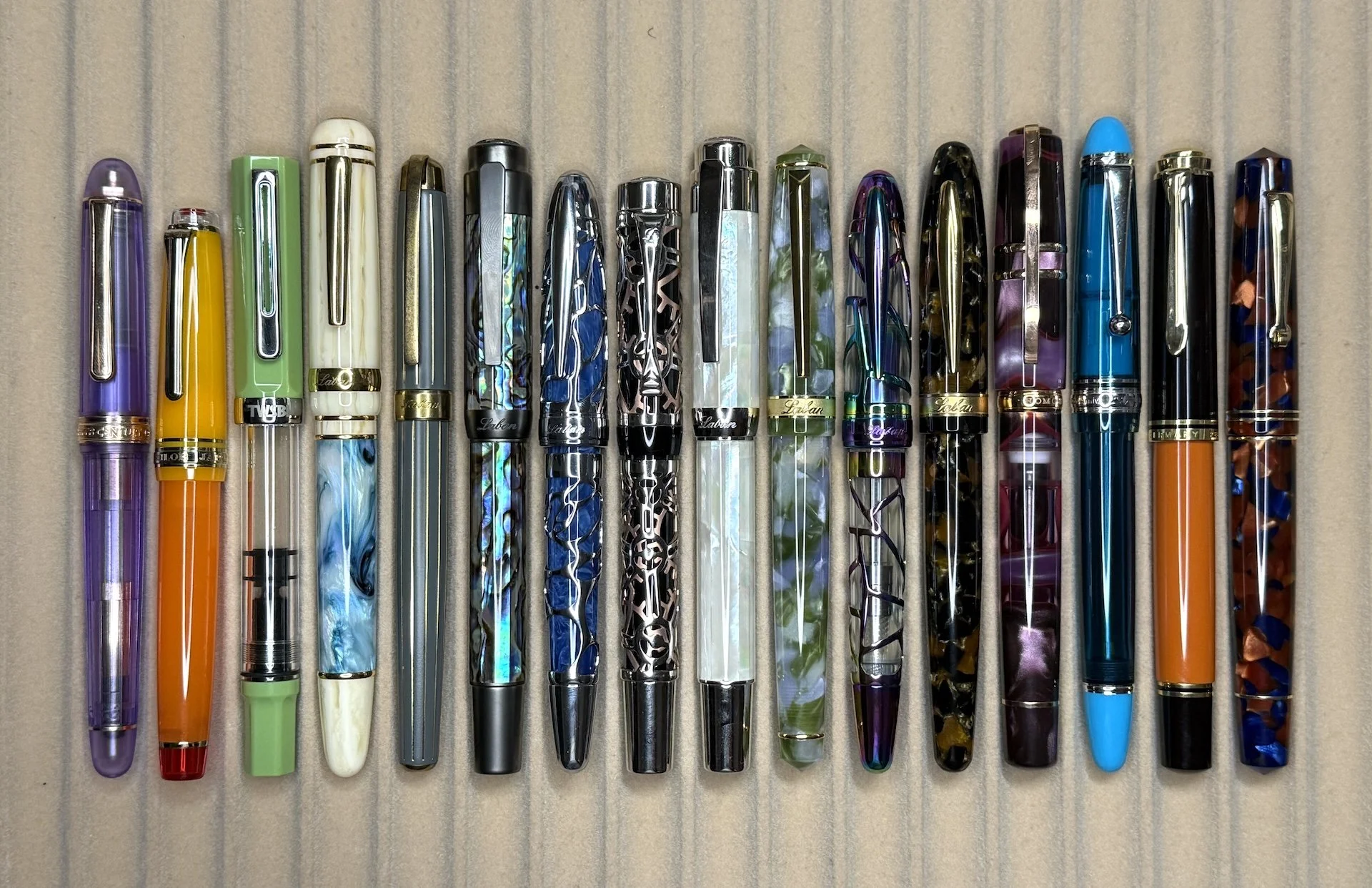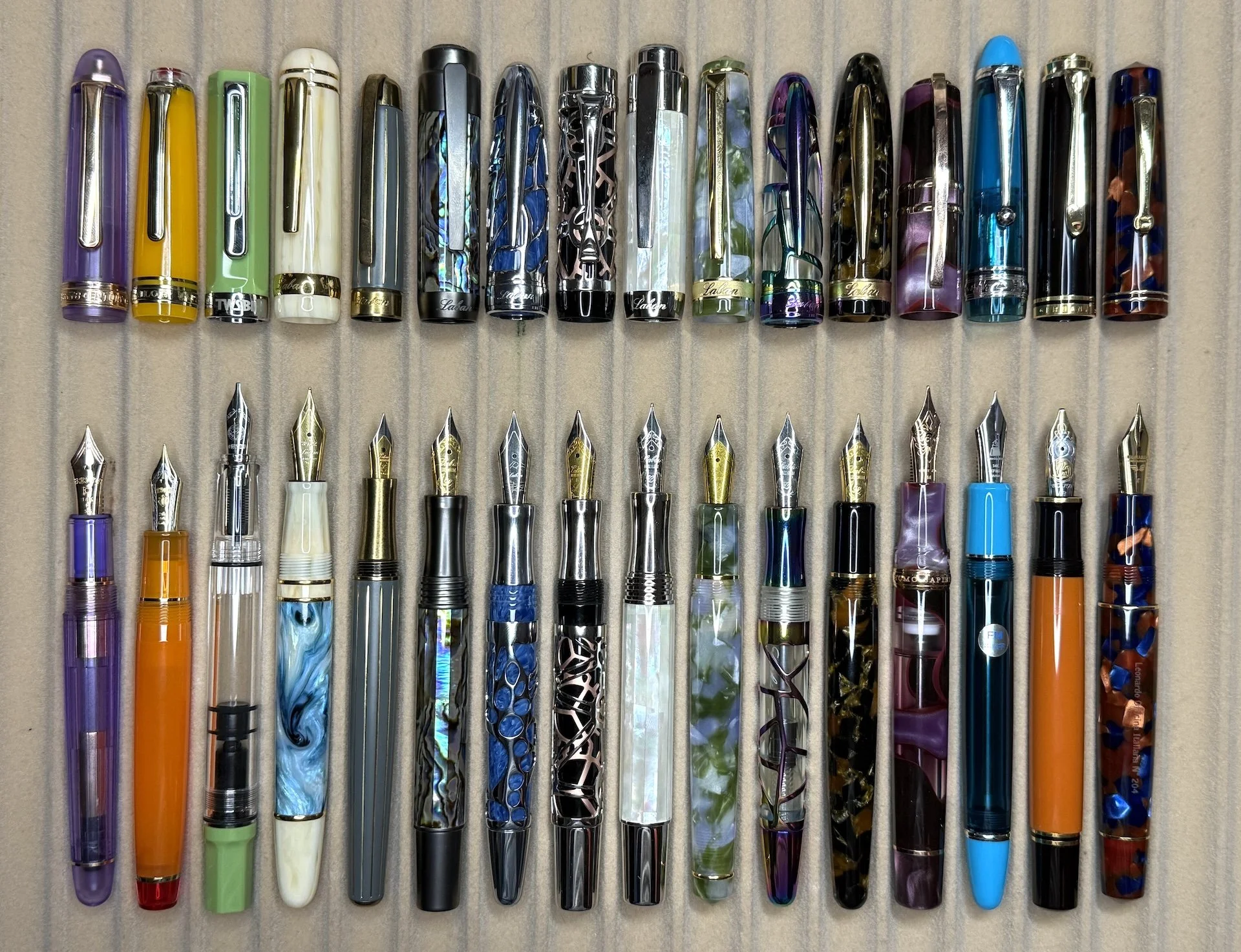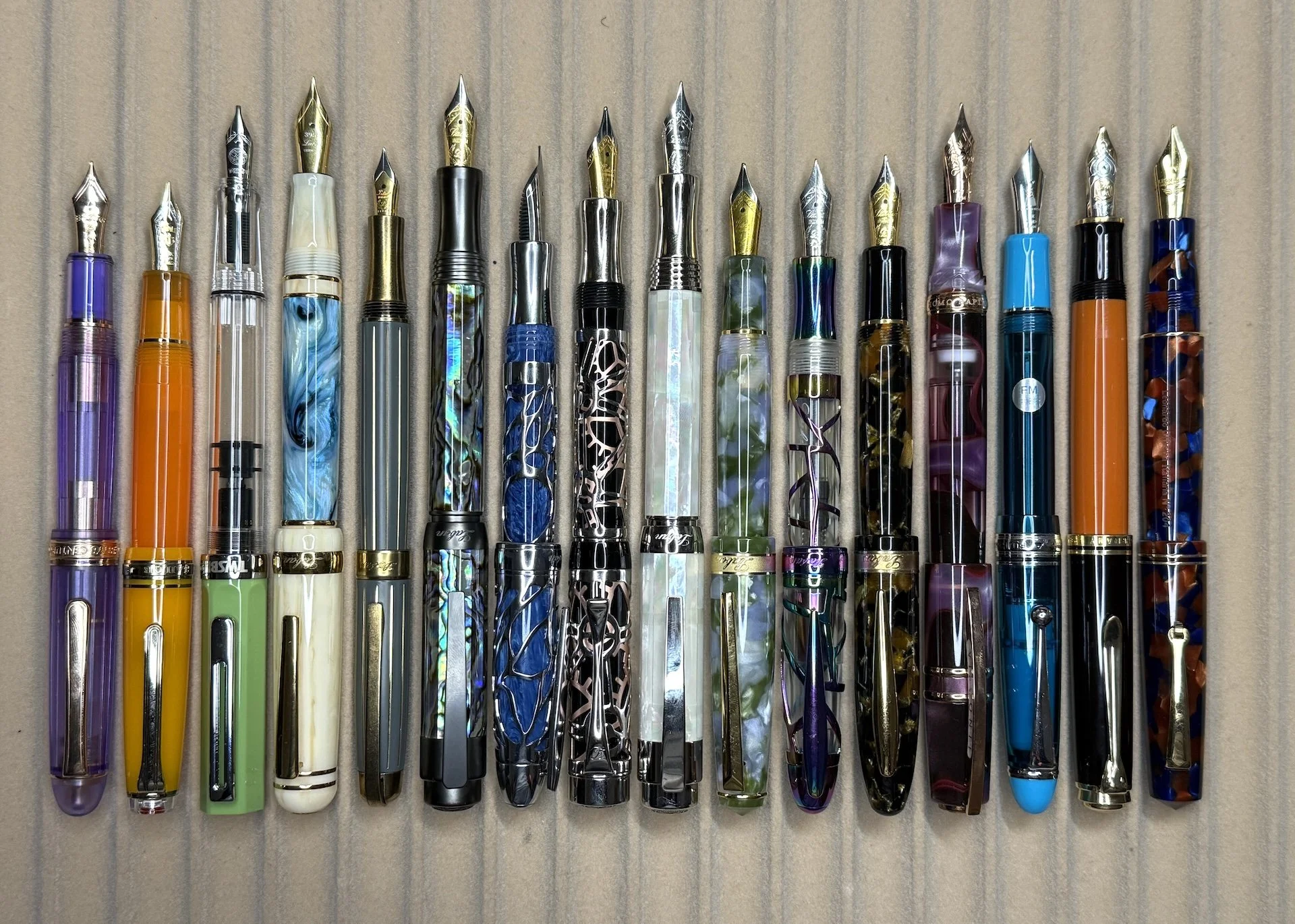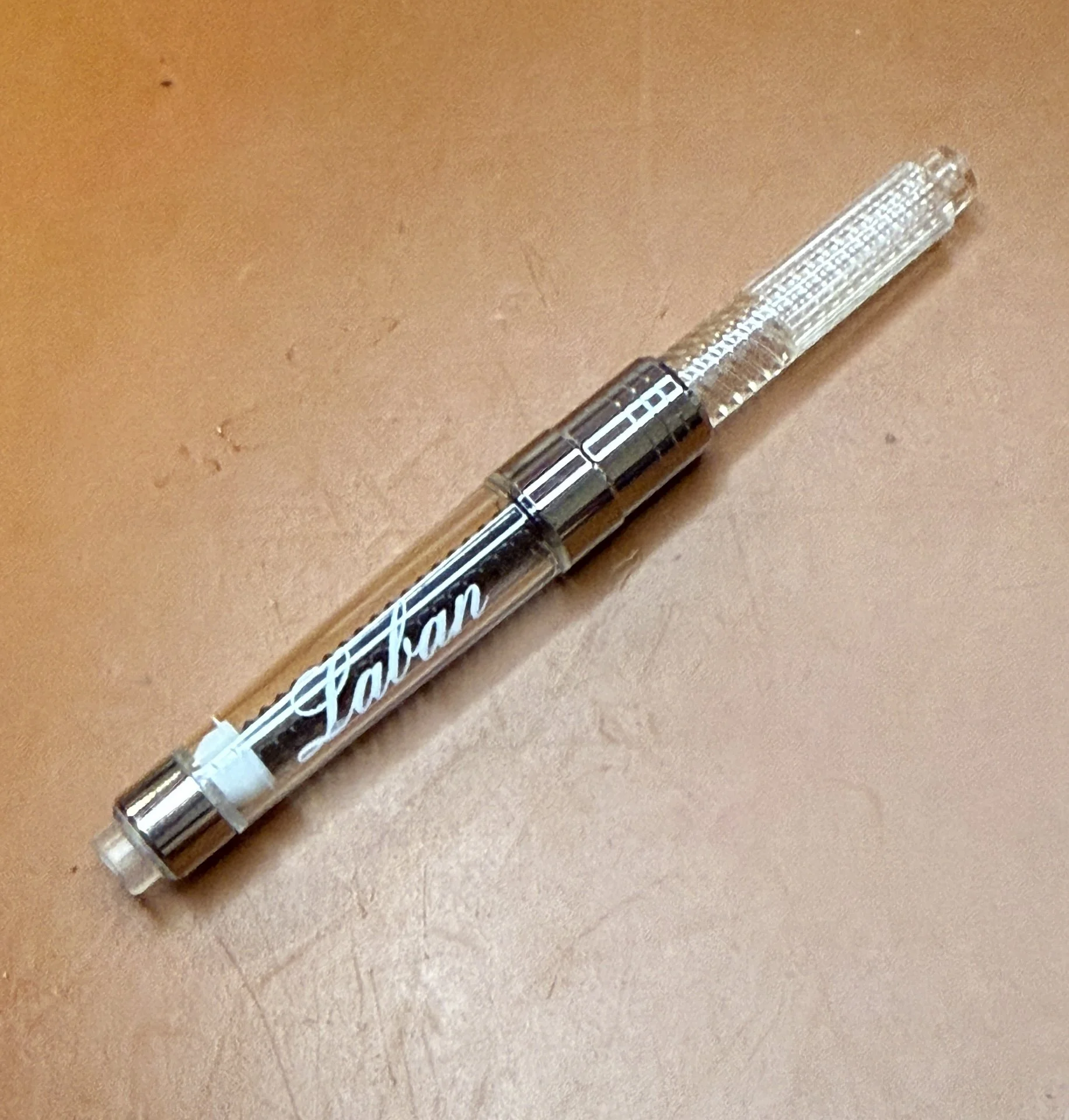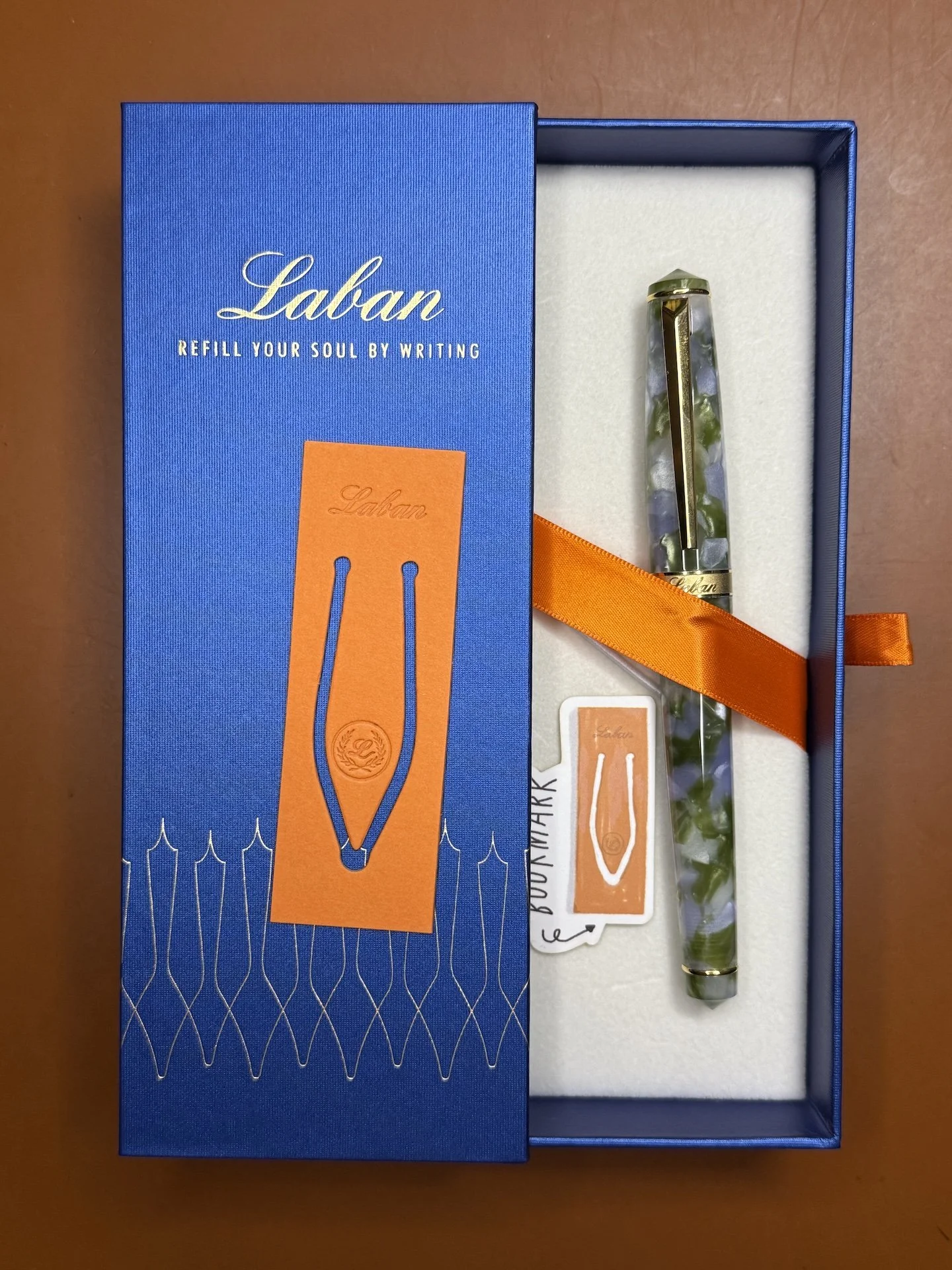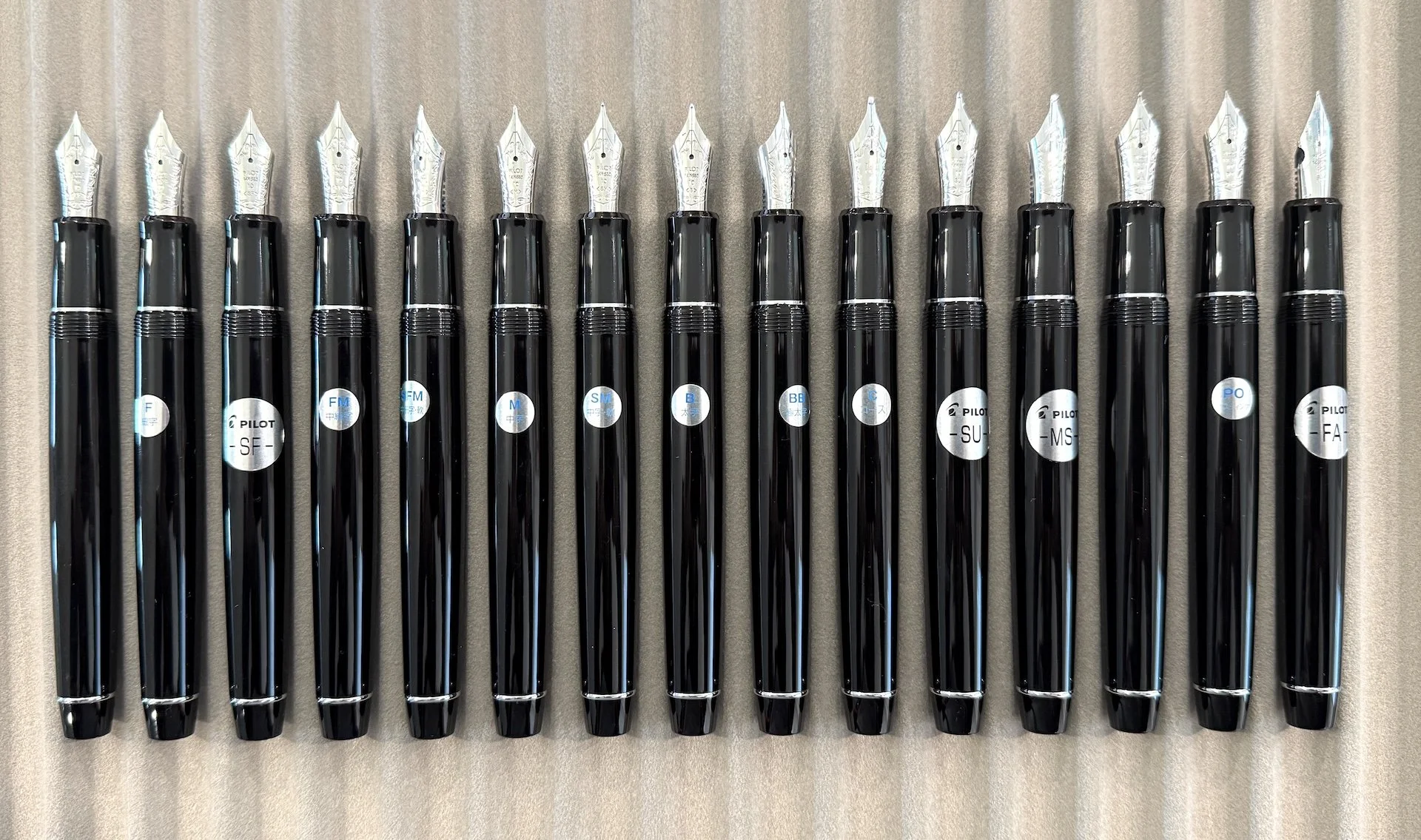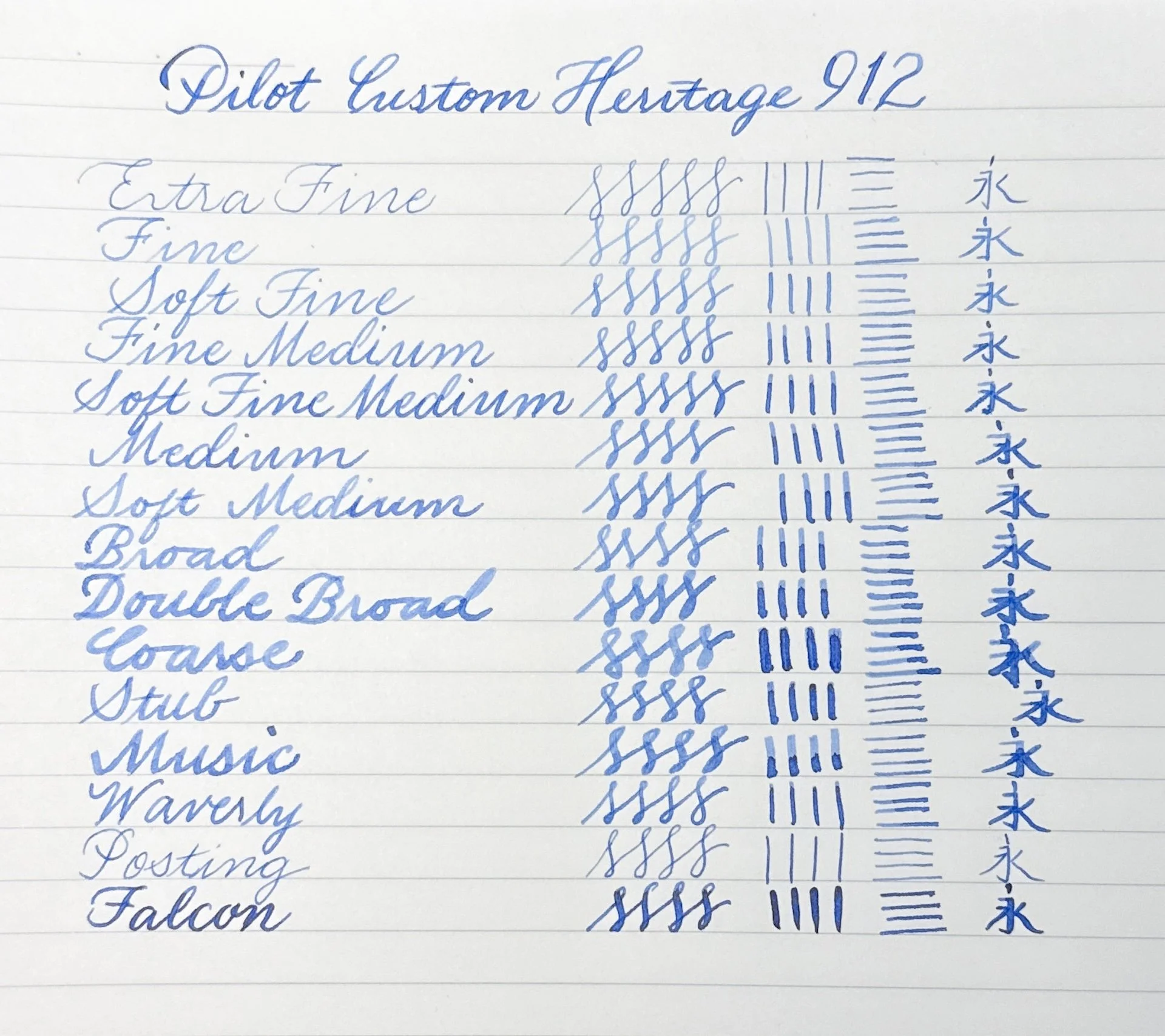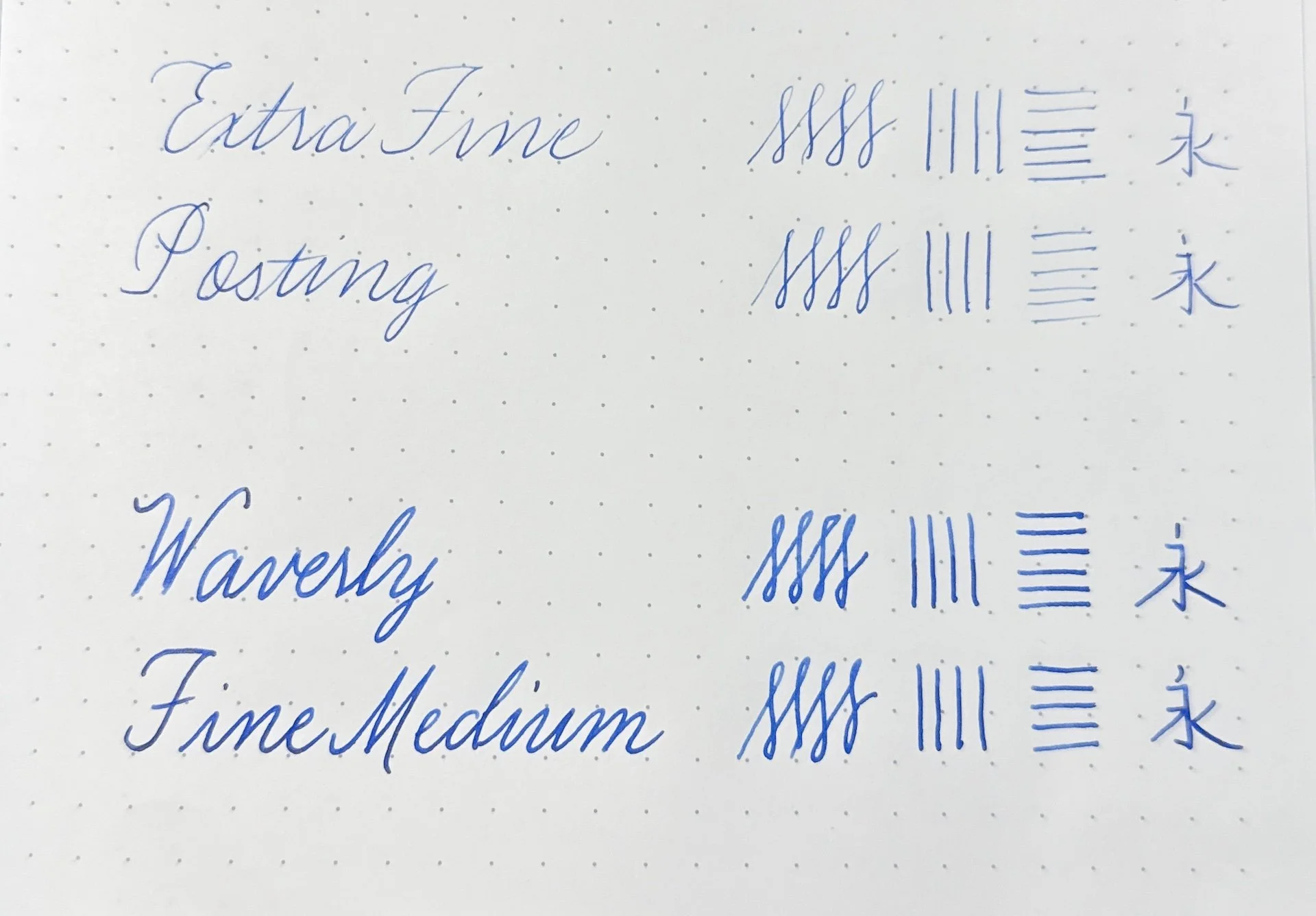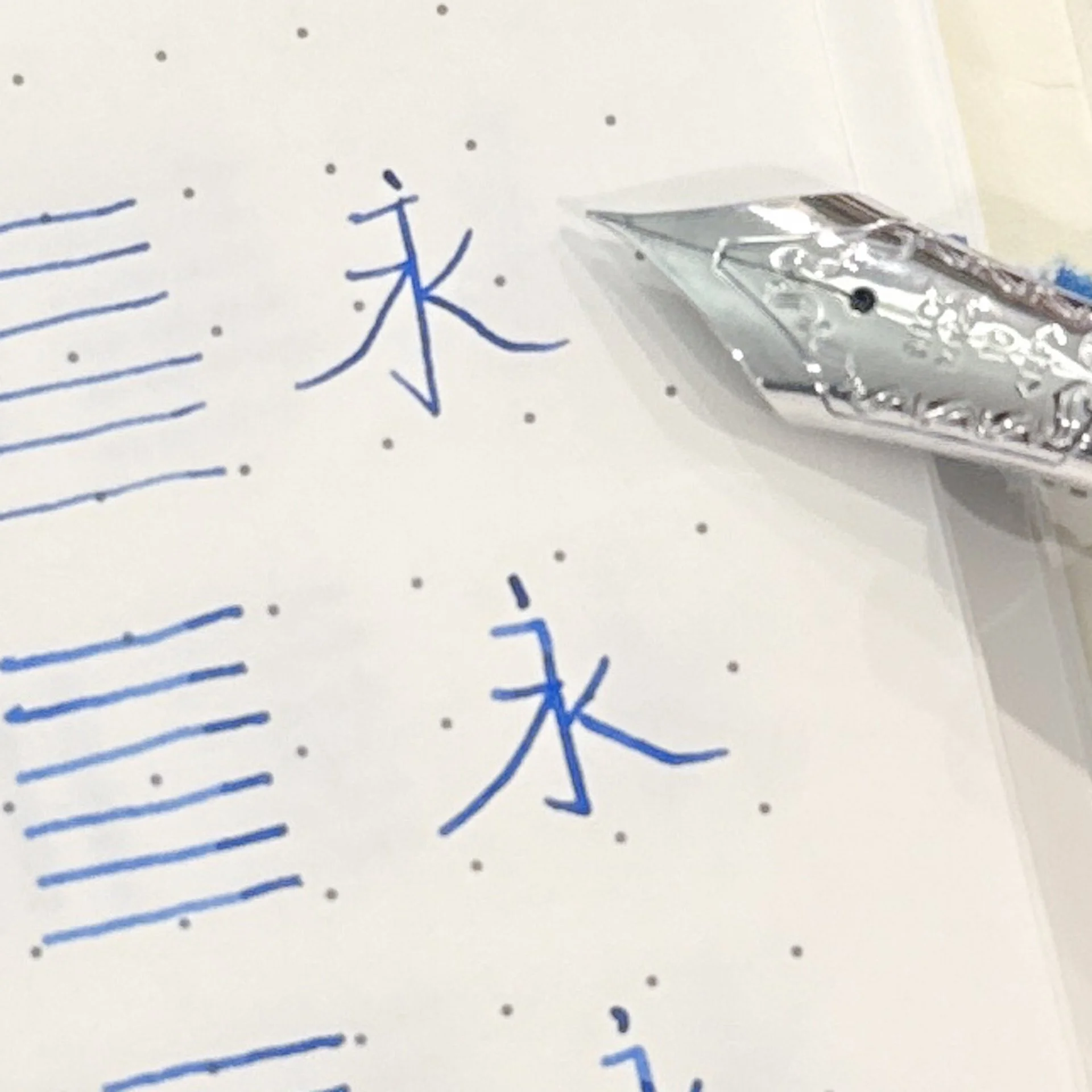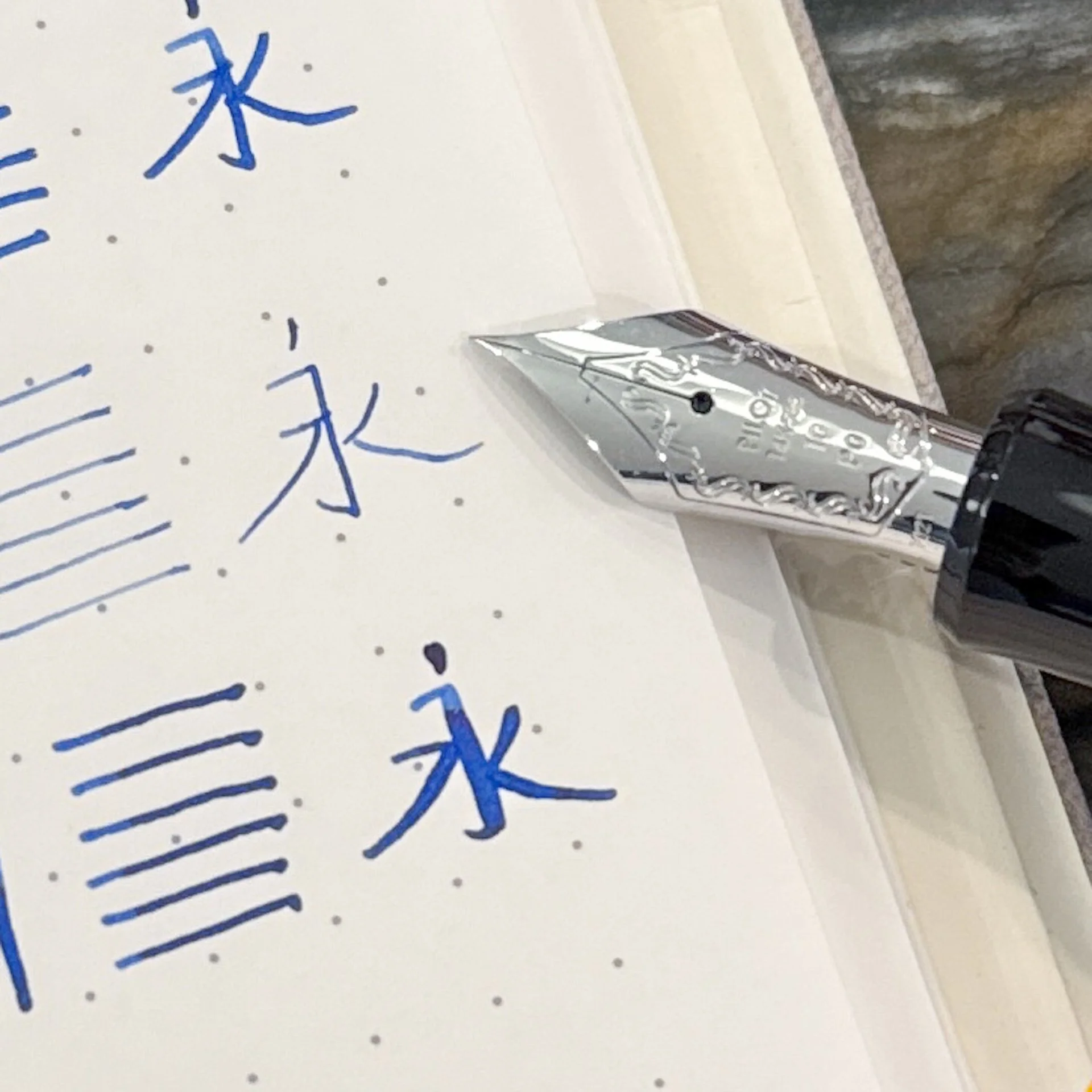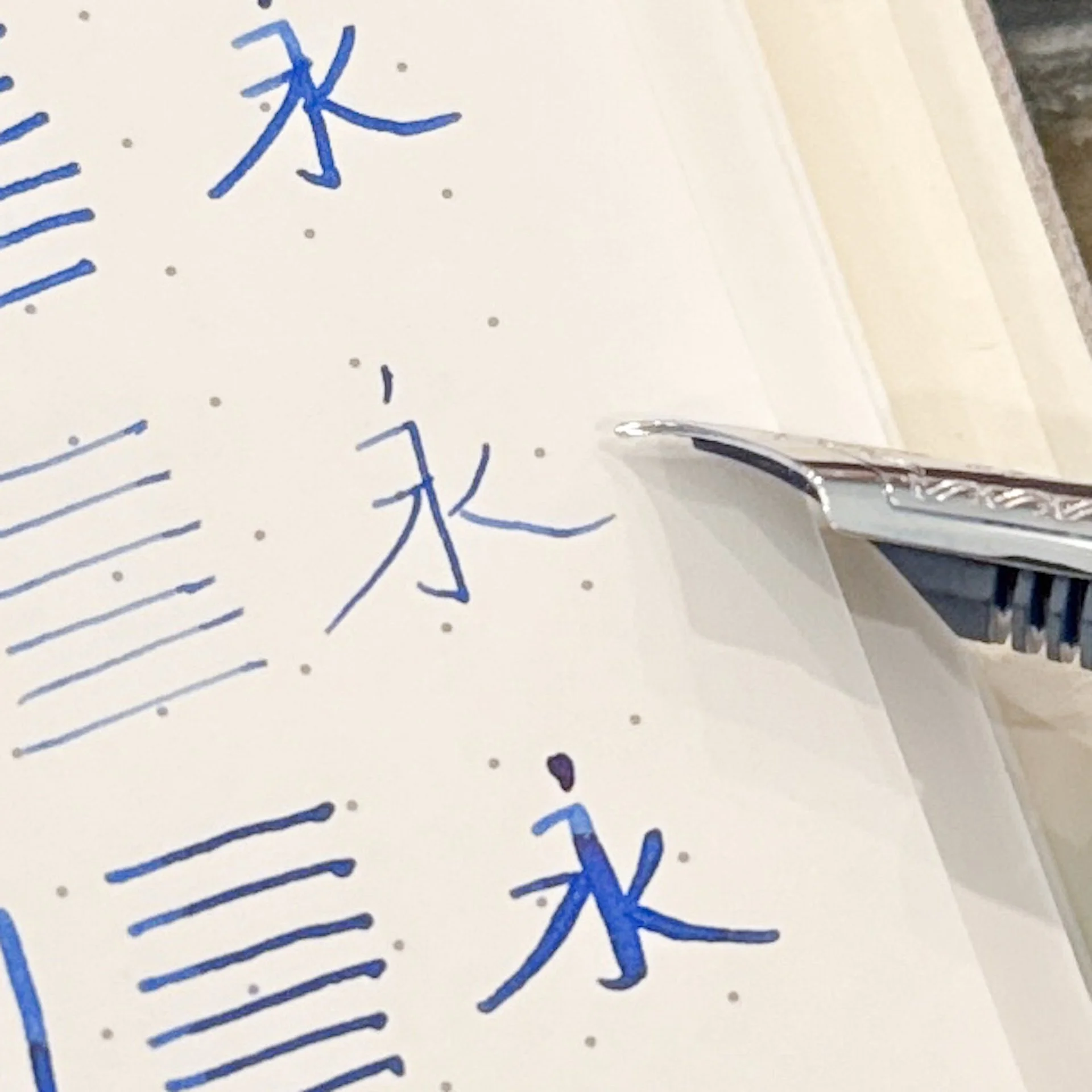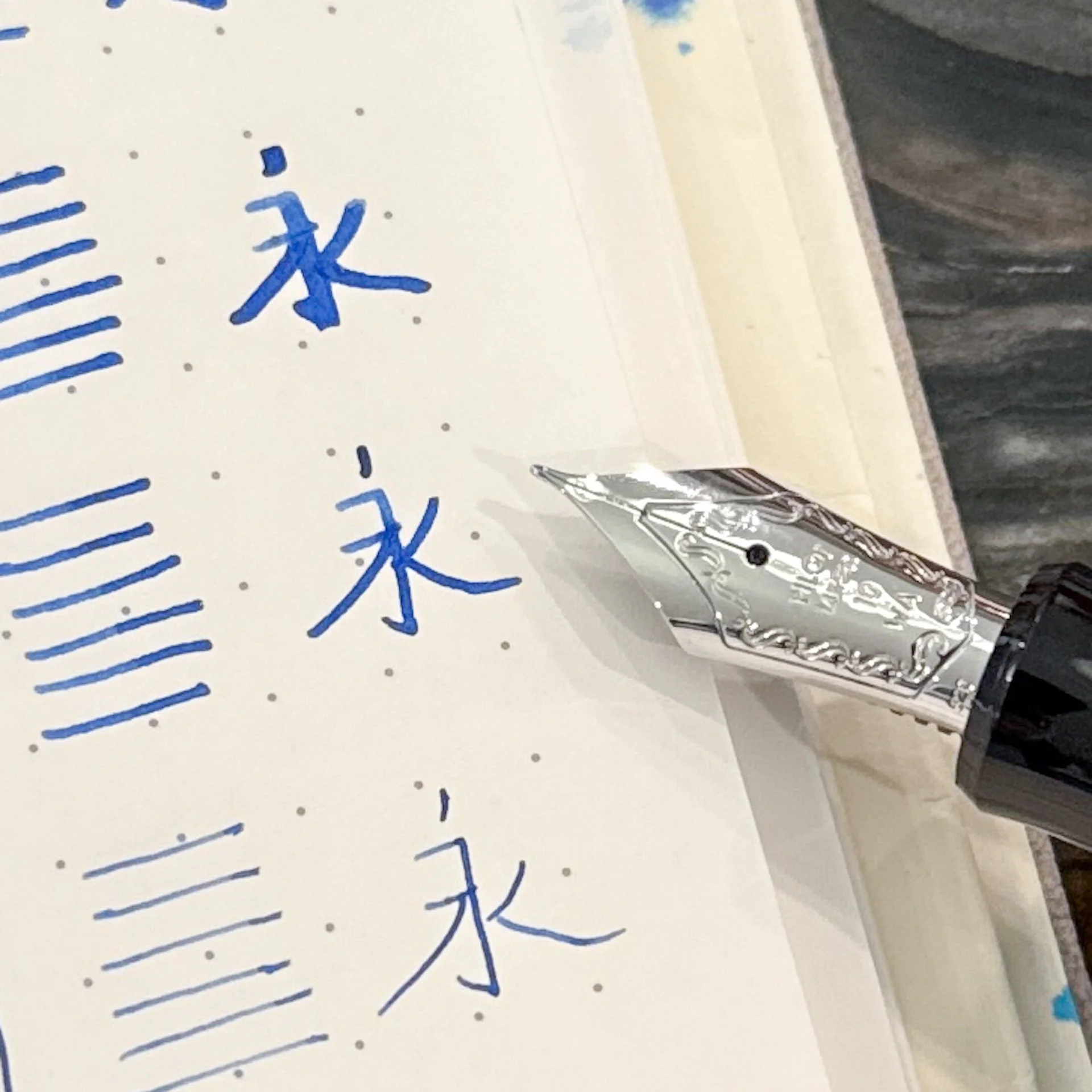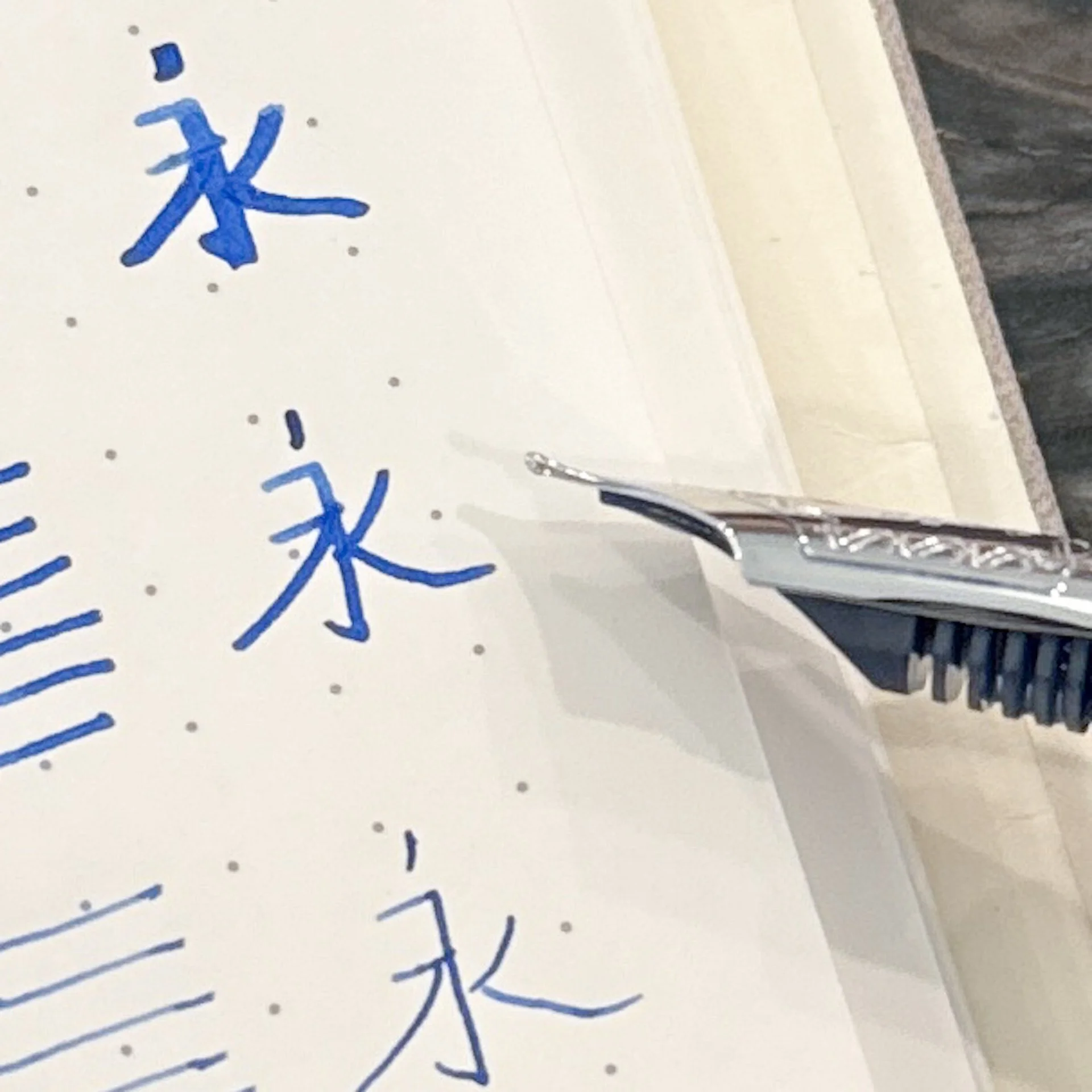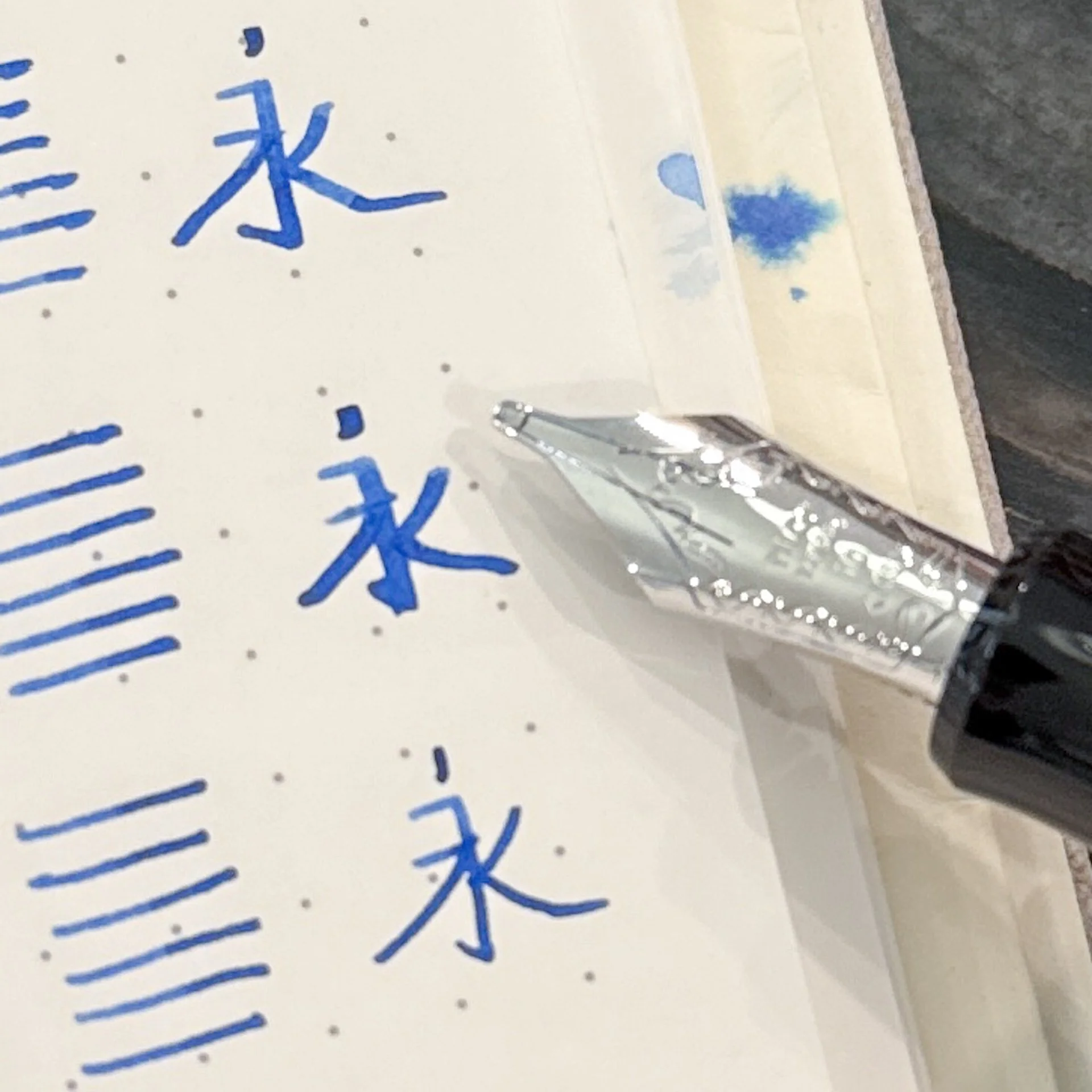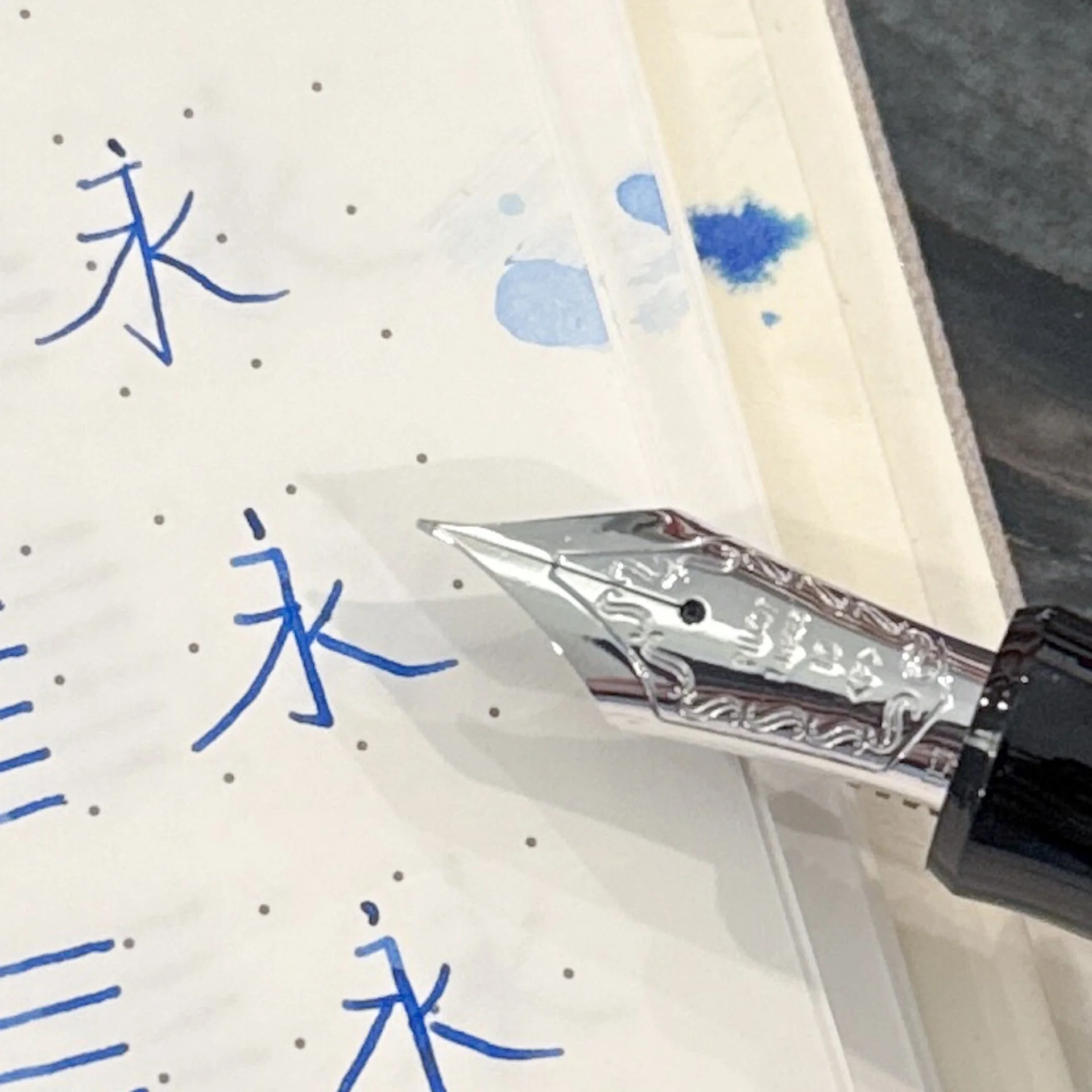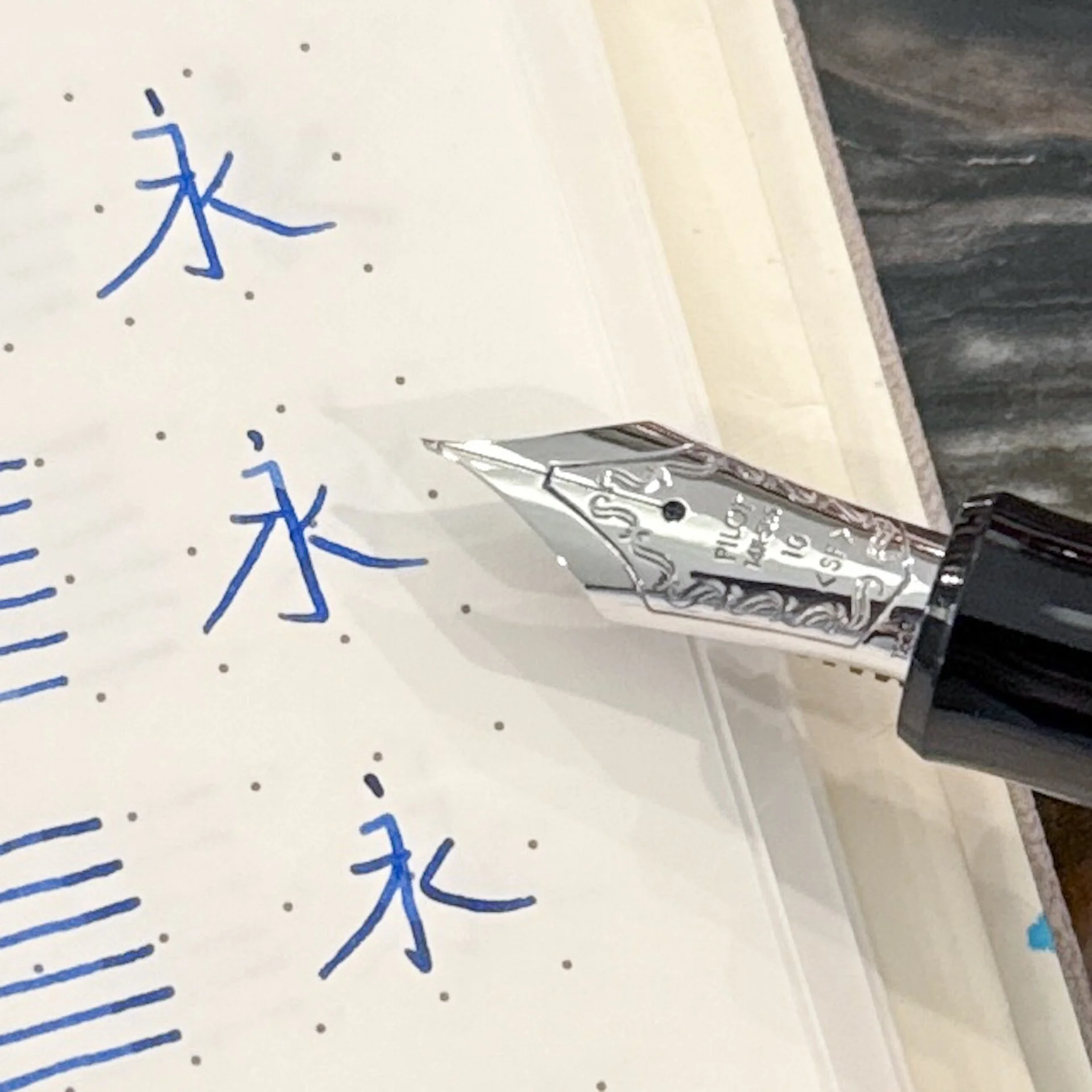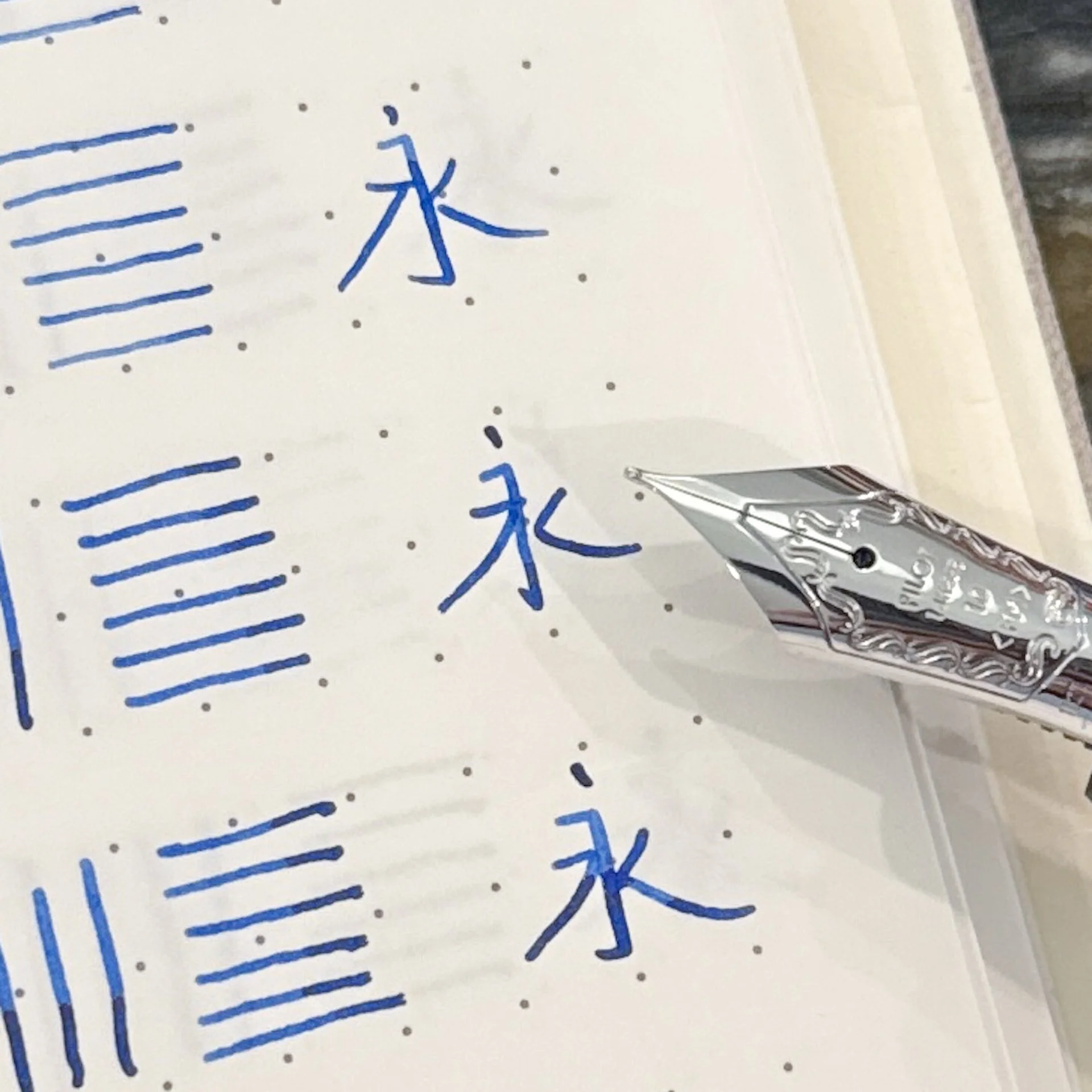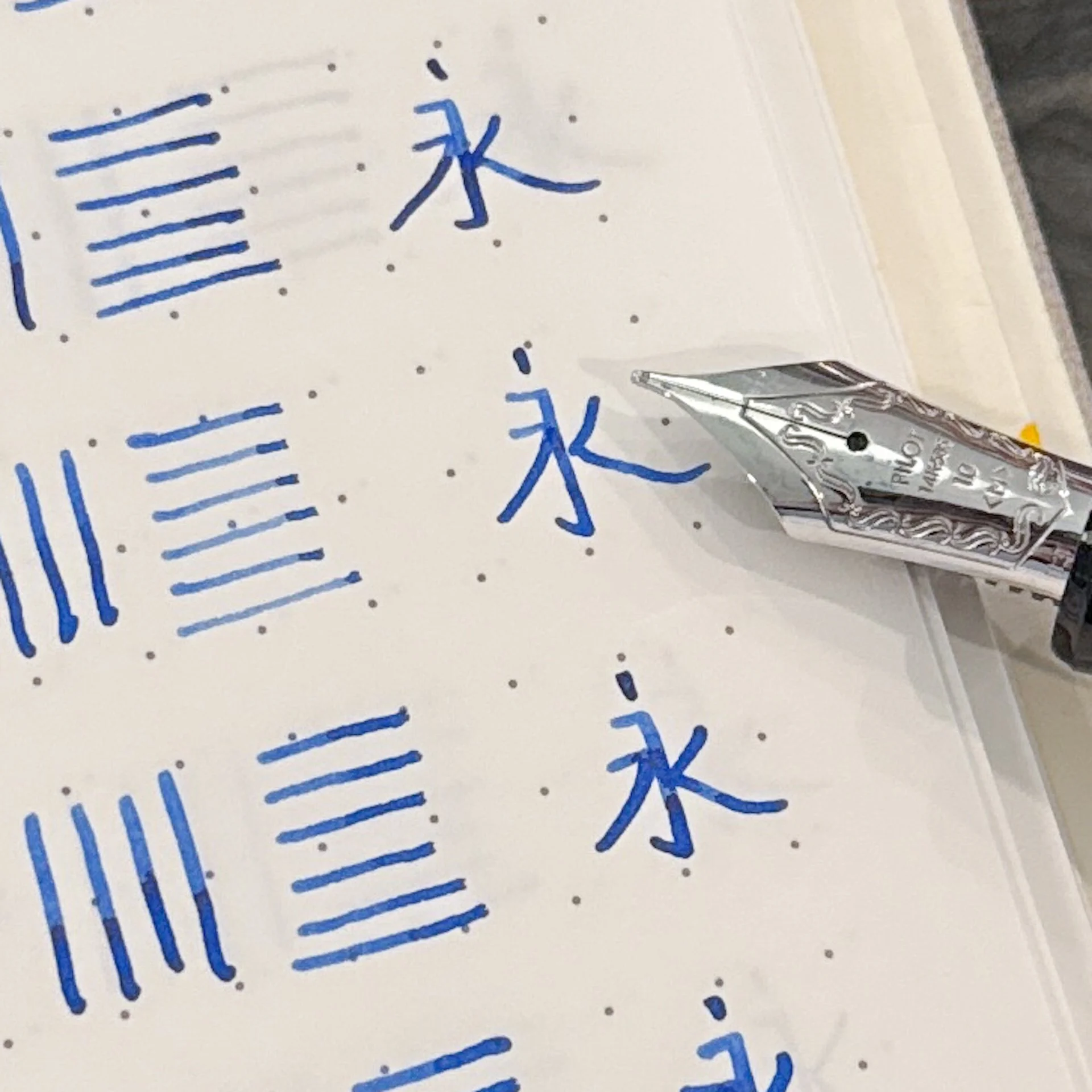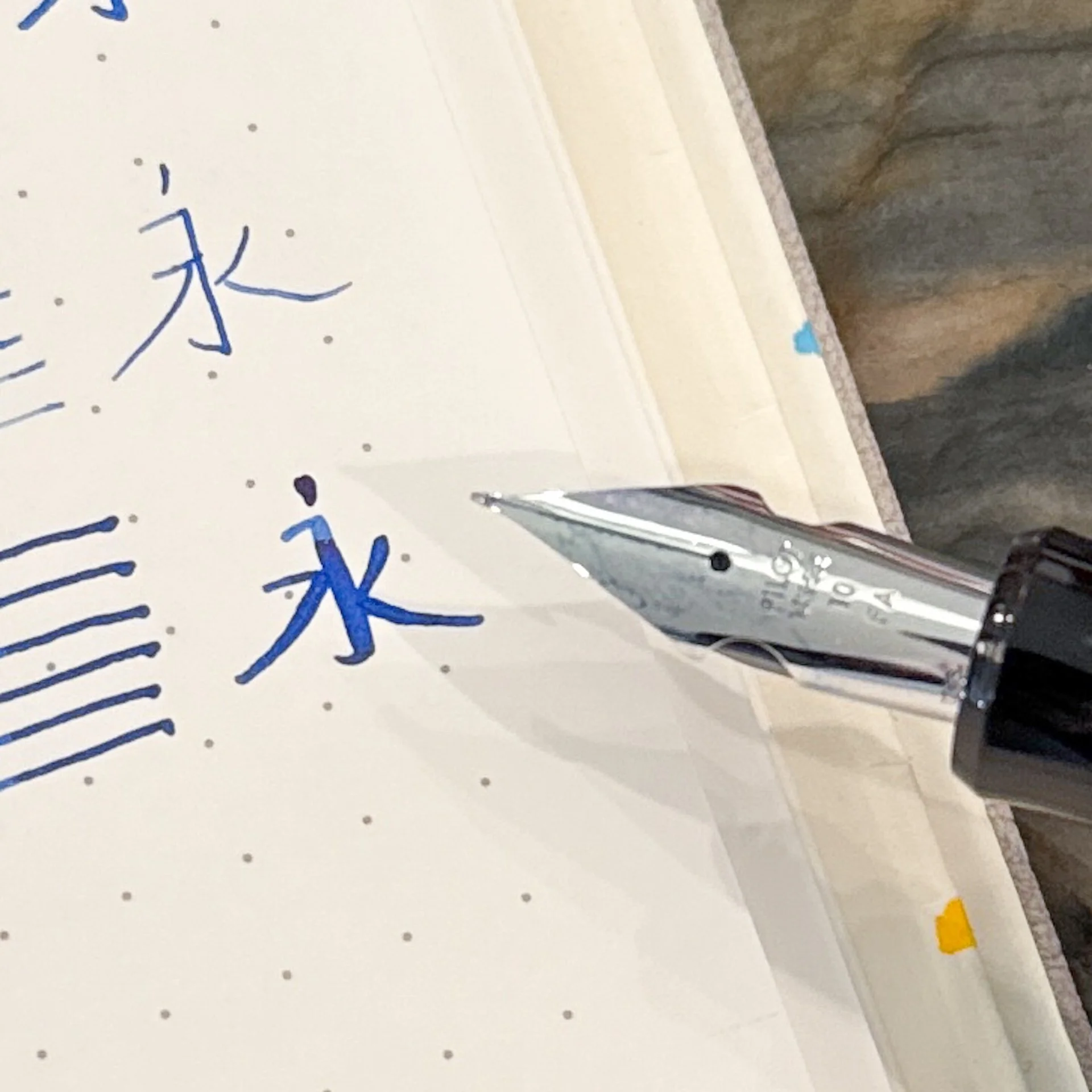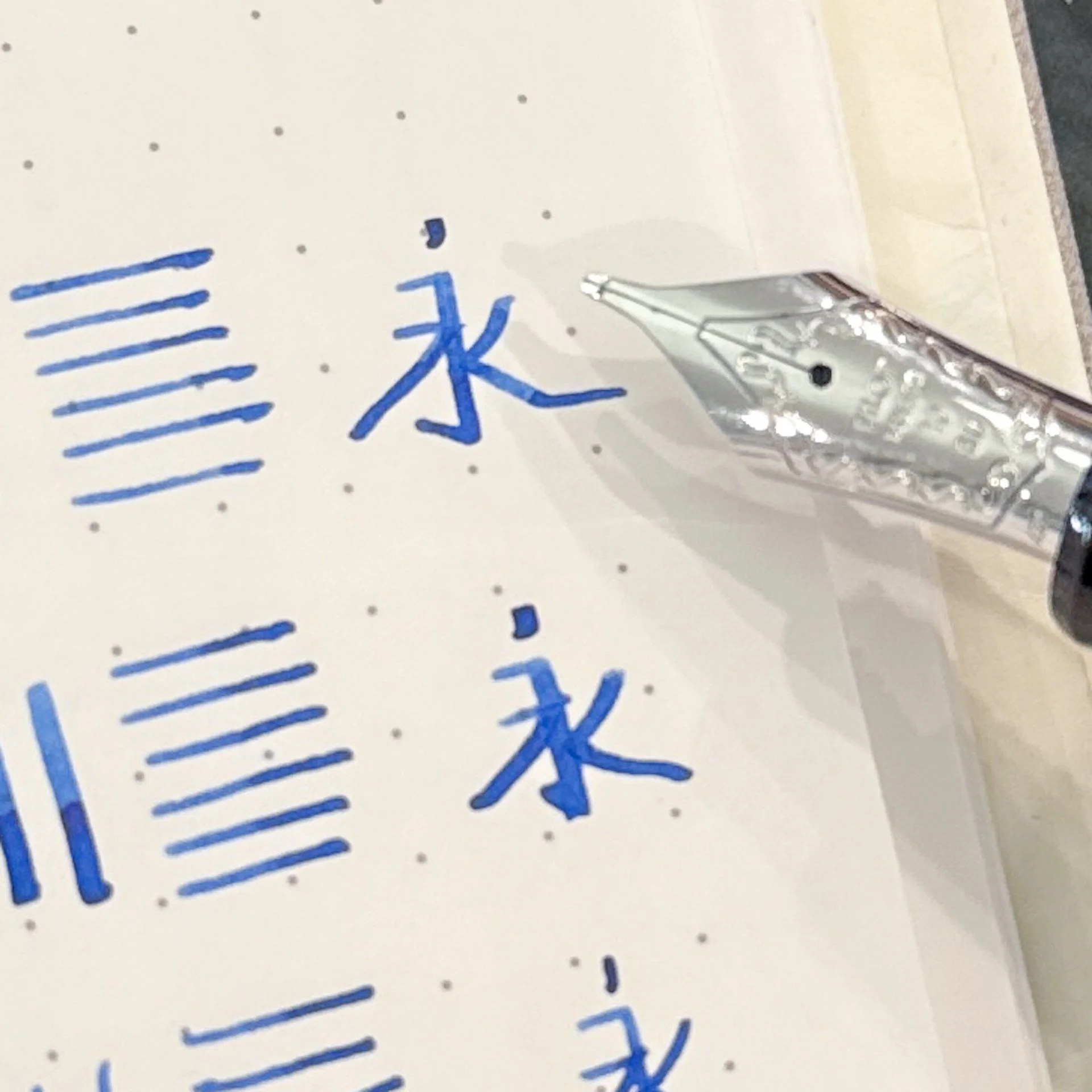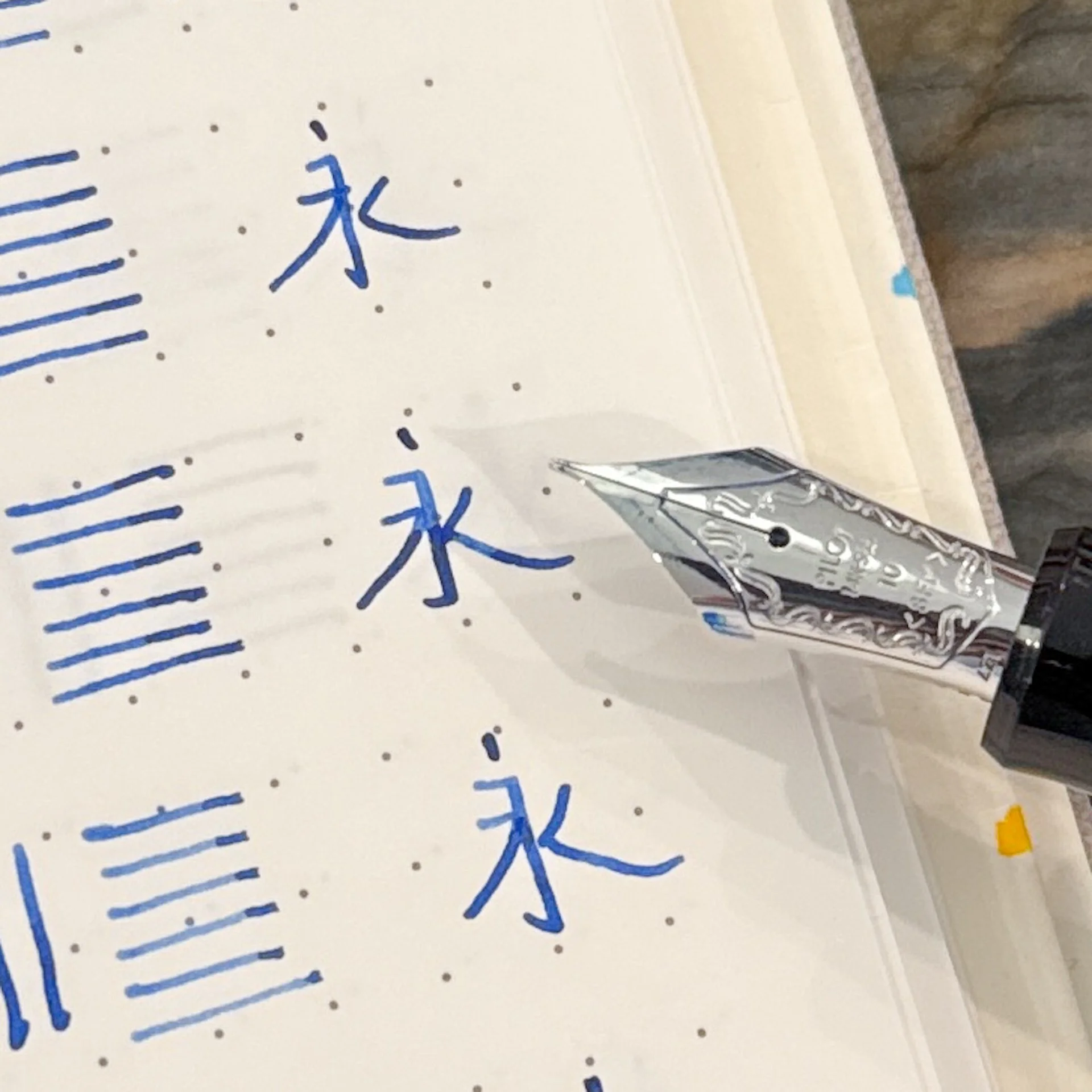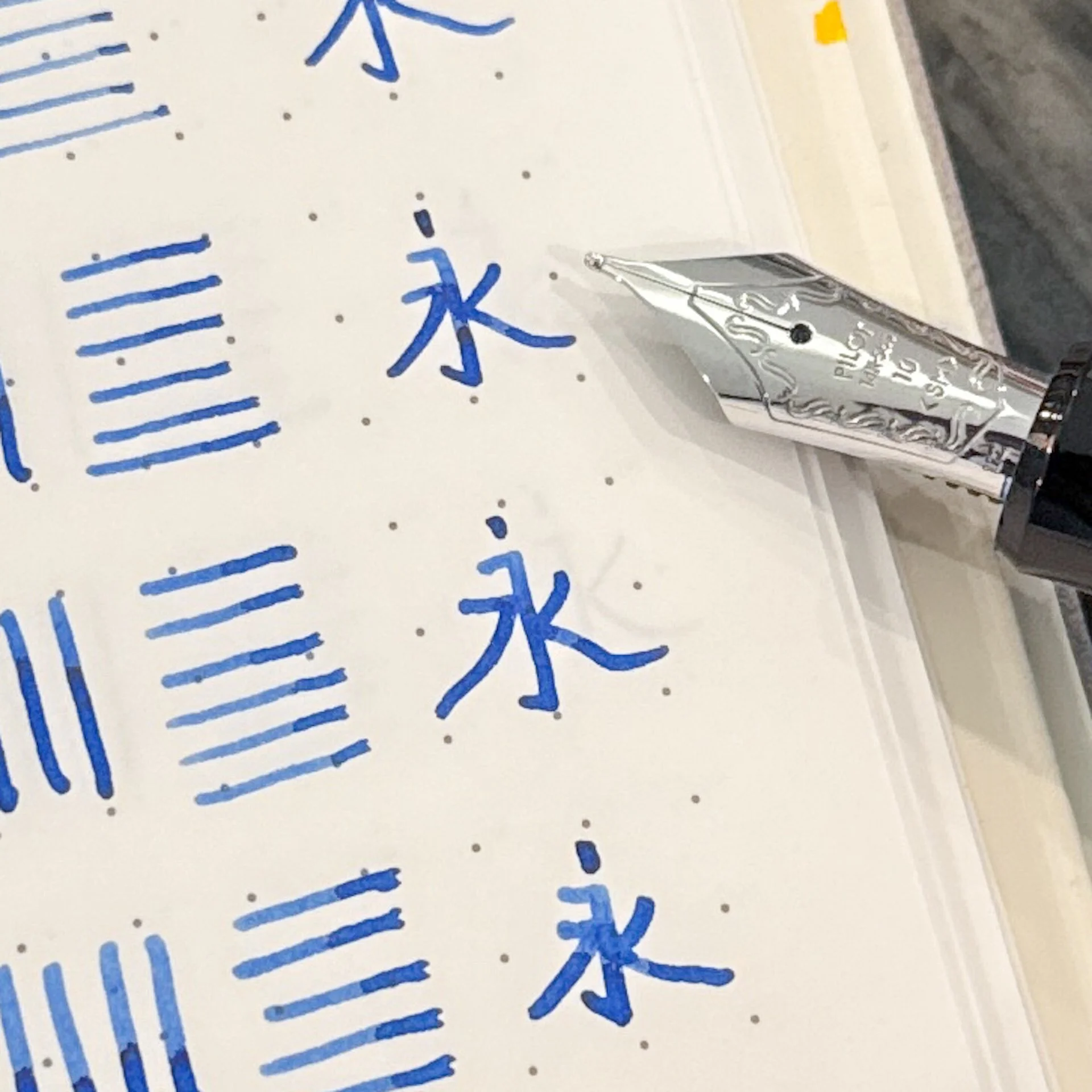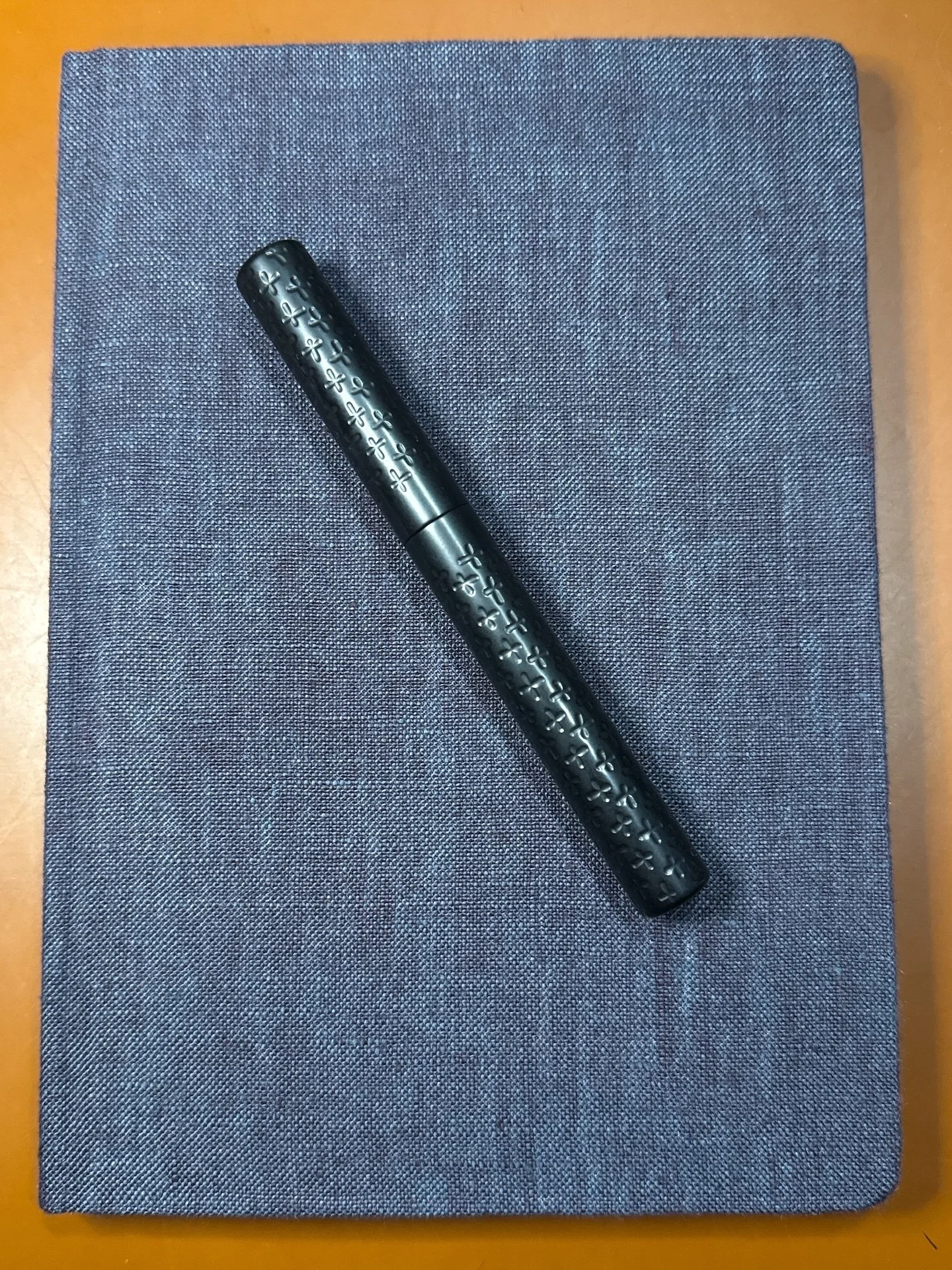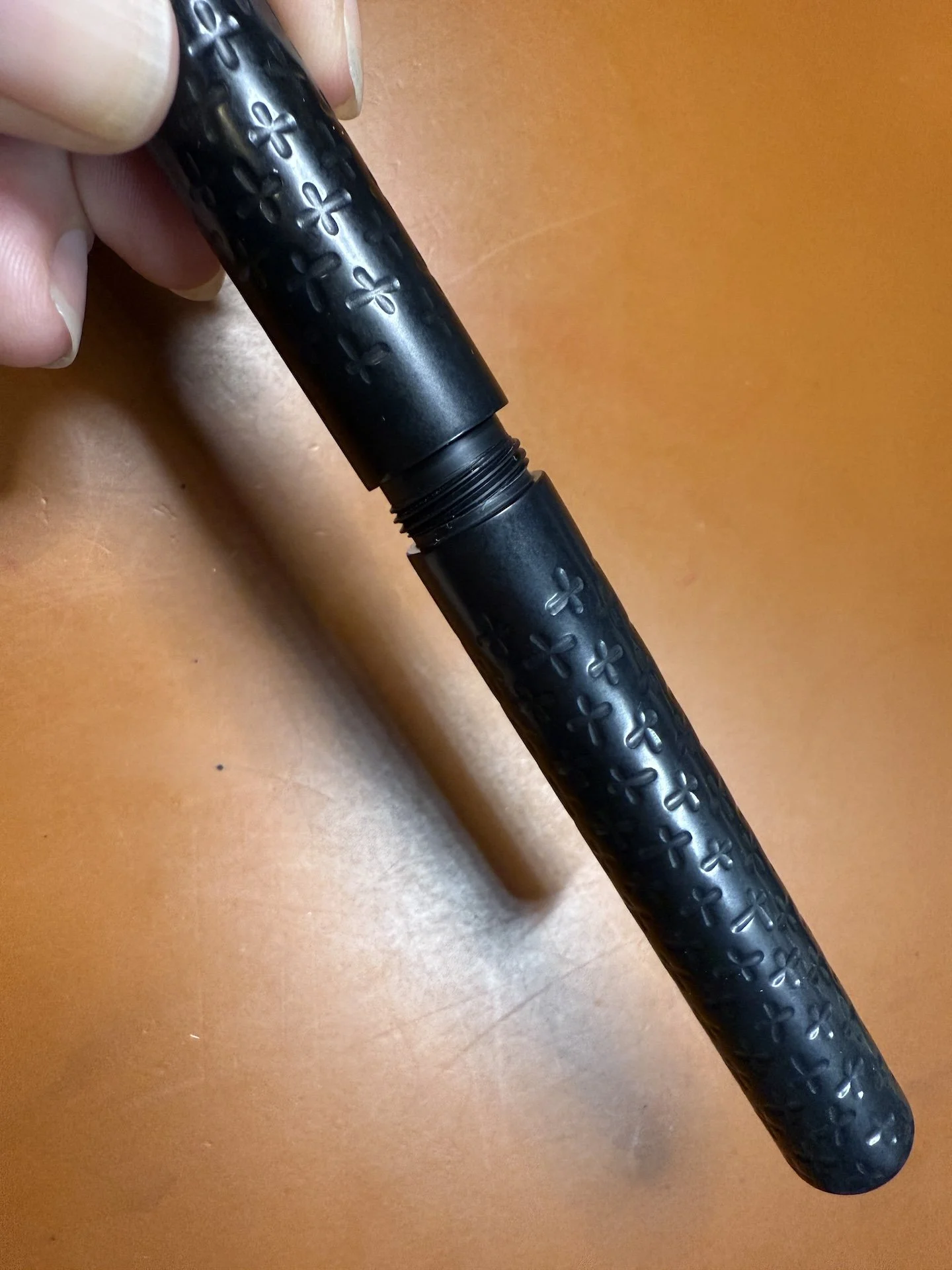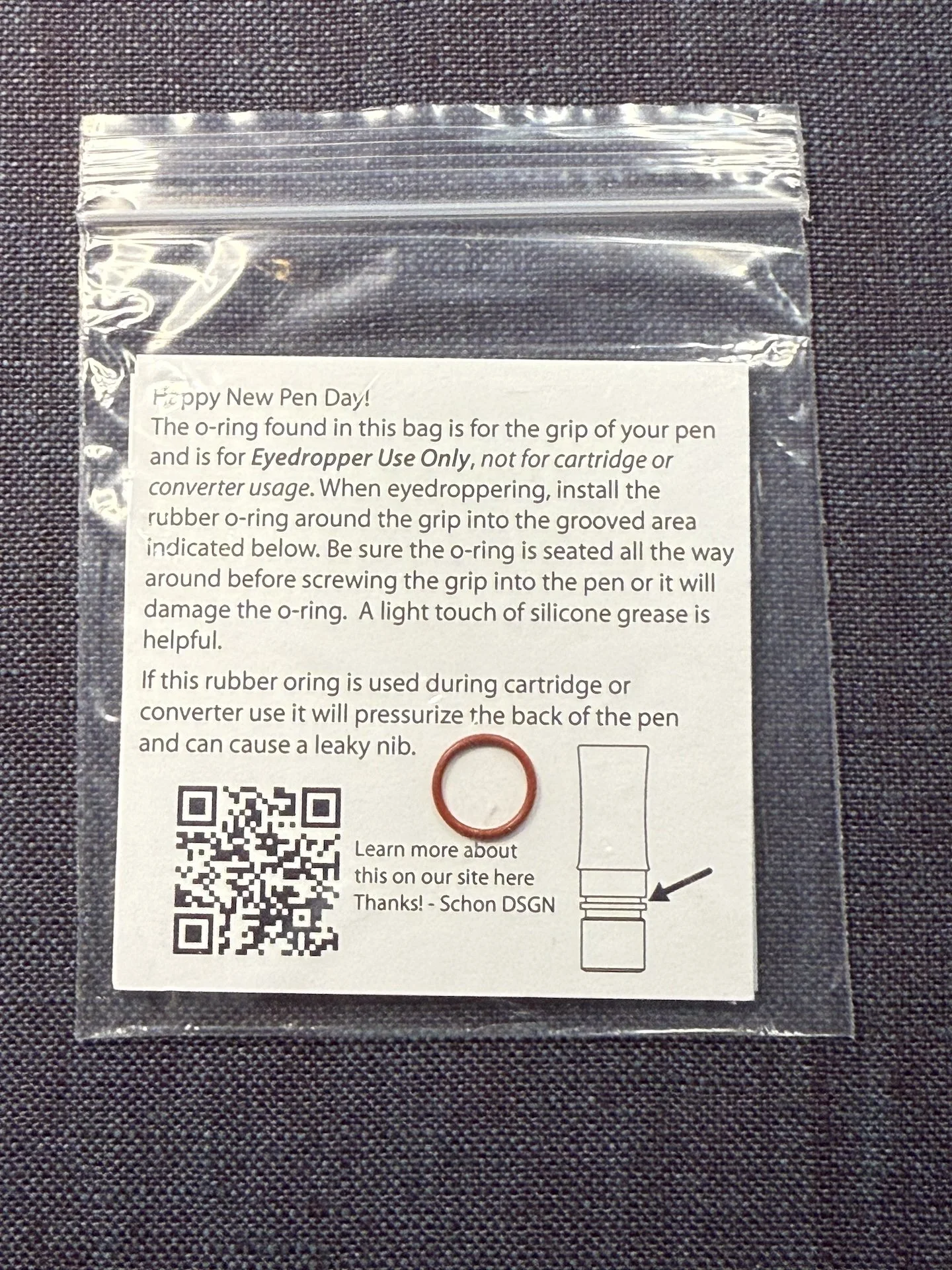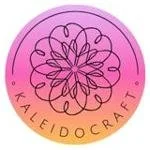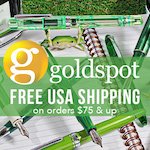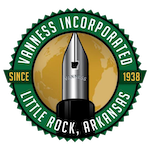(Kimberly (she/her) took the express train down the fountain pen/stationery rabbit hole and doesn't want to be rescued. She can be found on Instagram @allthehobbies because there really are many, many hobbies!.)
Last year, Luxury Brands of America added Laban Pens to their portfolio of brands that they distribute (including Platinum, Waldmann, Colorverse, Girologio, and others). Founded in Taiwan, Laban Pens has been making pens since 1981 (and inks in 2020). While I own all of their mythology series inks, I didn’t own any Laban Pens, so I wanted to take a closer look at their various models. Thank you to Bryce Gillett from LBA for loaning these pens for review.
Note:
- These aren’t all of the pens that Laban makes/sells, just the ones I was able to get from Bryce since their inventory is often flying off their shelves.
- Since these pens are on loan, I did not ink them up.
- Some of the models are also available as rollerballs/ballpoints, but I am only reviewing the fountain pens.
- I confirmed with Bryce that Laban nib housings are glued in, but you can pull the nib/feed out (it took more force than I was comfortable with, so I did not do so).
325 (and 326):
One of the best known models of Laban Pen is the 325. Most of its colorways sport a cream & light brown cap and finial, while others have a solid black cap/finial. The 325 is a great canvas for highlighting various barrel materials. They announced the 326 earlier this year, which is the same pen as the 325 but with special artisan resins for the barrel. The first, and only colorway so far, is Blue Mirage.
The 325/326 is a fairly light pen, comes equipped with a gold-toned Jowo 6 nib, and is available in Extra Fine to Broad and 1.5 for steel, and Flex EF and Flex F in 14kt gold. Note that this is Jowo’s “flex” nib which isn’t very flexy, even in 14kt gold. The retail price starts at $160 (steel nib), or $360 (14kt gold nib).
Two examples of the Laban 325 model, made with Jonathon Brooks resins, one with cream cap/finial and the other with black cap/finial. Both gorgeous!
The many colors of the 325.
Antique’II:
The Antique’II is the second in the Laban brass series (the first being Antique), and has etched/engraved lines down the cap and barrel. It is made from recycled brass, so expect some patina on the trim (clip/finials/cap band) over time.
The Antique’II is available in EF to Broad. It uses a smaller, two-toned nib, which is made by Bock. I was unable to remove the nib or unscrew the housing to confirm if it is compatible with Kaweco Sports but it looks like it should. It is a slimmer pen with a smaller nib, but the brass gives it some heft. The pen retails for $120.
Laban Antique’II Fountain Pen in Grey.
Antique’II nib (left) next to a Kaweco Sport.
“Jewellery” Series - Abalone and Mother of Pearl:
The Abalone pen comes in two trim colors, Silver and Gun Metal (grey). The Mother of Pearl (MOP) has silver trim. Both start at $270 with a two-toned, size 6 Schmidt steel nib (EF to B). The Mother of Pearl starts at $330 with the same nib options. Both the Abalone and MOP pens are made from real abalone shell and mother of pearl.
Laban Abalone with Gun Metal trim (left) and Mother of Pearl.
Formosa:
The Formosa has a blue swirled resin base that is covered with a silver-plated overlay. It is equipped with a specially-engraved, silver-toned EF- Broad Jowo 6 nib and retails for $280.
Galileo:
The Galileo has a multi-layer overlay design - a resin base, topped with two different plated overlays. Despite two overlays, the Galileo is not a super heavy pen. It is very comfortable to hold because it’s not very hefty. There are currently two colorways, the one shown below (black, rose gold, silver) and rose gold (cream, silver, rose gold). It is equipped with a two-toned EF-Broad nib and retails for $280.
This Laban Galileo has a black resin base, rose gold gear layer, and a silver-plated overlay on top.
Galileo in hand, surprisingly as not heavy as it looks.
Rosa:
The Rosa is another pen in Laban’s Resin collection and has trim bands around the cap, and at the top & bottom. I like the slightly conical ends which makes it visually more interesting than cigar or flat ends. It is equipped with a two-toned EF-Broad nib and retails for $140.
Laban Rosa in Lilac.
Skeleton:
The Skeleton is another overlay pen in Laban’s Filigree collection. Unlike the Formosa or Galileo pens, which have non-transparent bases, the Skeleton has a clear, transparent acrylic base which is then covered with silver, gun metal, rose gold, or in this case, a rainbow plated-metal overlay. The Rose Gold version has a two-toned nib, while the other colors (including Rainbow) have a silver-toned nib. EF-Broad nib sizes are available and most colors retail for $280, while the Rainbow is $300.
Laban Skeleton in Rainbow.
Skeleton uncapped. Not gonna lie, I wish the nib was also rainbow and not silver-tone.
Taroko:
Like the Rosa, the Taroko is part of the Resin collection. The Taroko is a cigar-shaped, gold trim pen. Unlike the Rosa, the Taroko does not have trim rings near the top or bottom of the pen, giving it a clean, classic look. It is equipped with a two-toned EF-Broad nib and retails for $140.
Laban Taroko in Pinnacle.
Laban pens capped (left to right): 325, Antique’II, Abalone, Formosa, Galileo, Mother of Pearl, Rosa, Skeleton, Taroko.
Laban pens posted - While the pens are postable, there is nothing preventing the cap band or threads from potentially scratching the barrel when posting. As such, I gently put the cap on the barrel for the photos. It would also make some of the pens (especially the MOP) extremely back heavy.
Comparison with other pens (L to R): Platinum 3776, Sailor Pro Gear, TWSBI Eco, Laban Pens, Visconti Homo Sapiens, Pilot Custom 823, Pelikan M800, Leonardo Momento Zero.
All of the pens come with a Laban-banded converter (already installed in the pen), orange nib bookmark (and a little tag to let you know the sticker is below the pen panel), and booklet - all encased in a blue box and white box sleeve. Cartridges are not included.
Laban’s converter is standard international. The clear piston knob is less distracting in their Skeleton pens.
Laban’s packaging (minus white box sleeve) shown with the Laban Rosa. I like the orange nib bookmark (on top of the box.)
The Laban pens come in a wide range of styles and price points, and are outfitted with reliable nibs (based on my experience with Schmidt and Jowo nibs on other pens), making them worth checking out. After spending time with all the pens, I’ve been eyeing the Laban Rosa in Lilac and the Taroko in Pinnacle and might have to reach out to Bryce about buying one of them 😀 Laban Pens can be purchased from all of our site sponsors, including Vanness Pens, Pen Chalet, JetPens, and Goldspot, and you can see them at next week's San Francisco Pen Show at the Luxury Brands tables.
(Disclaimer: All pens were on loan for review by Bryce Gillett of Luxury Brands of America. All other pens are my own.)





